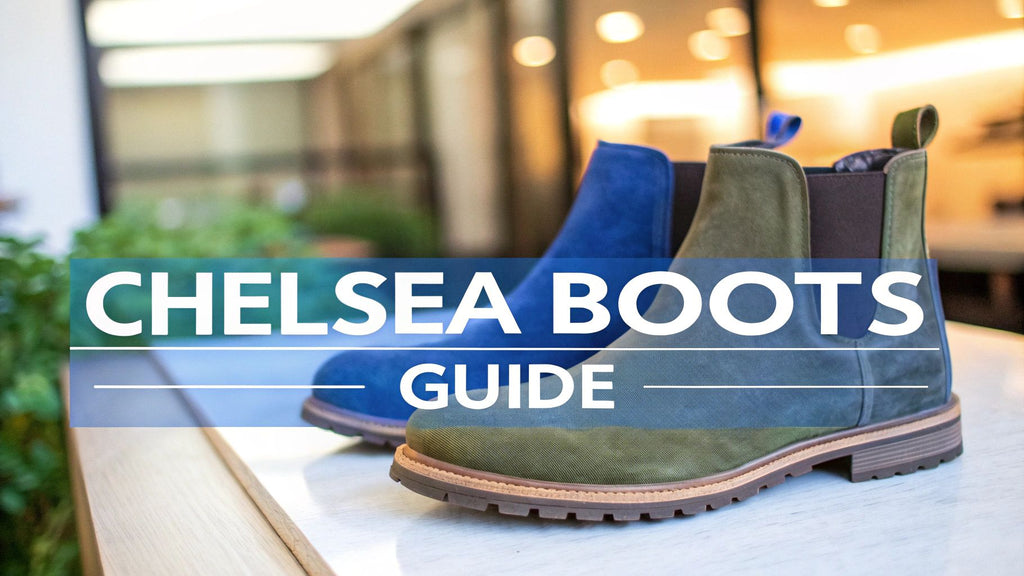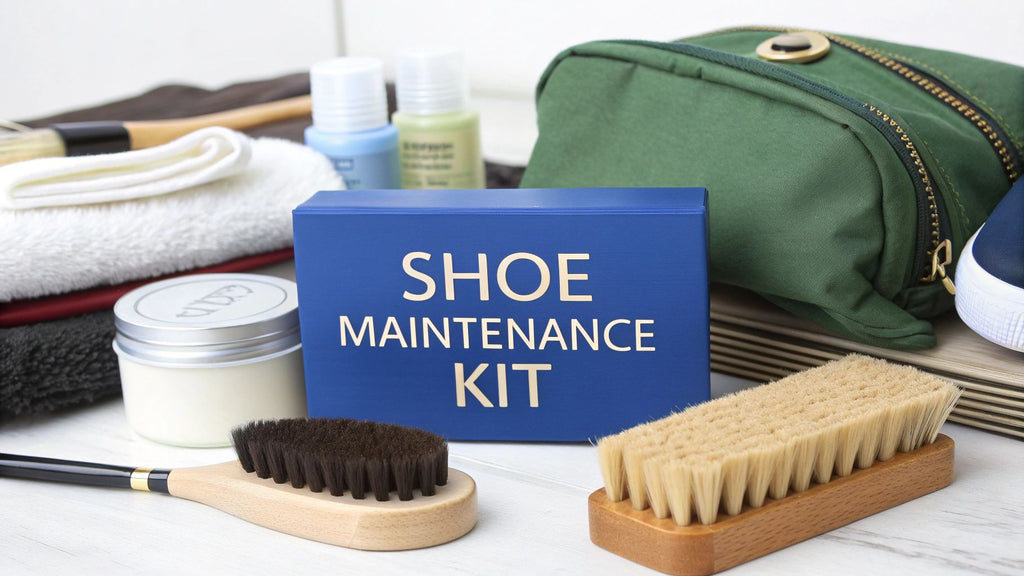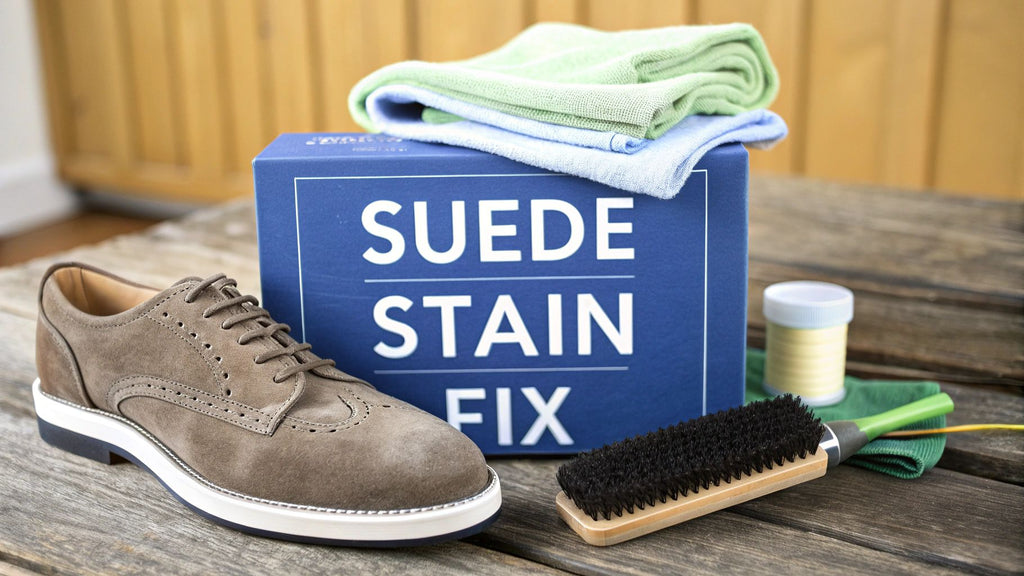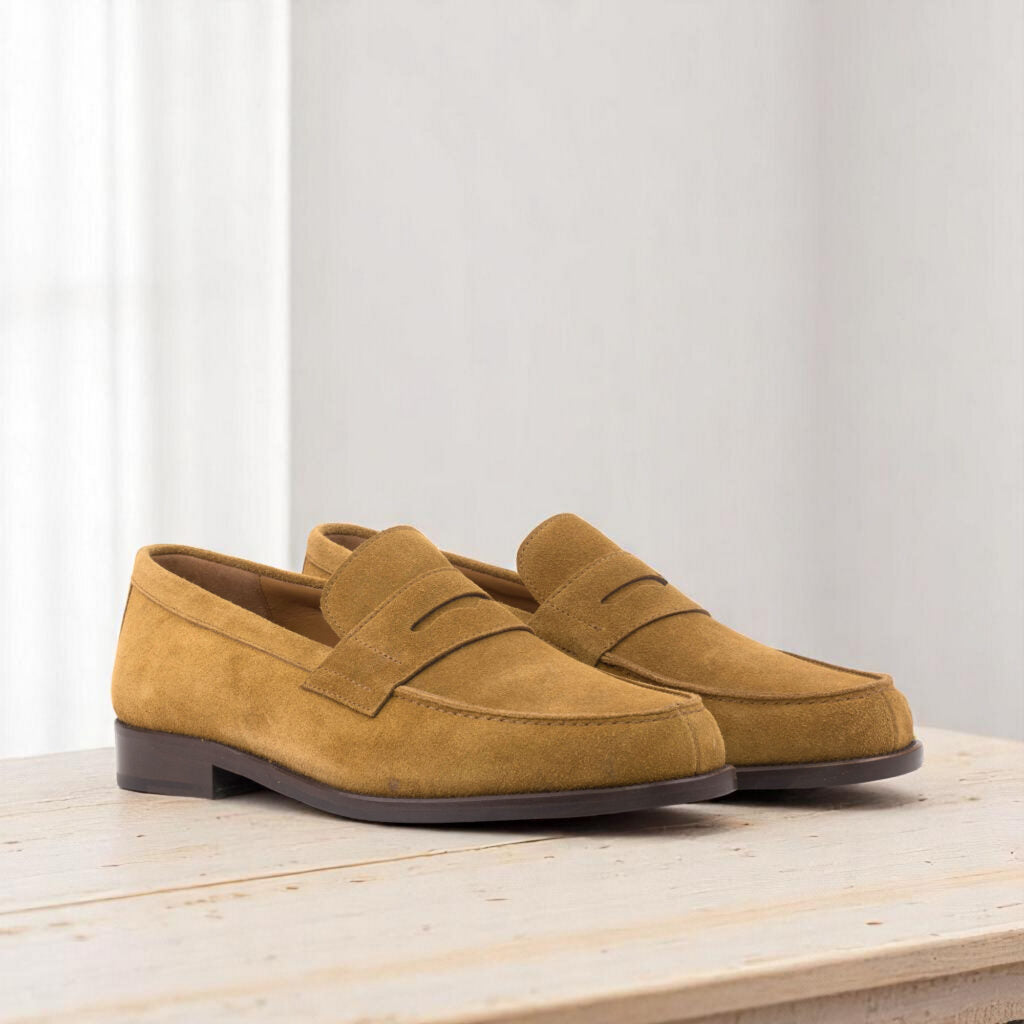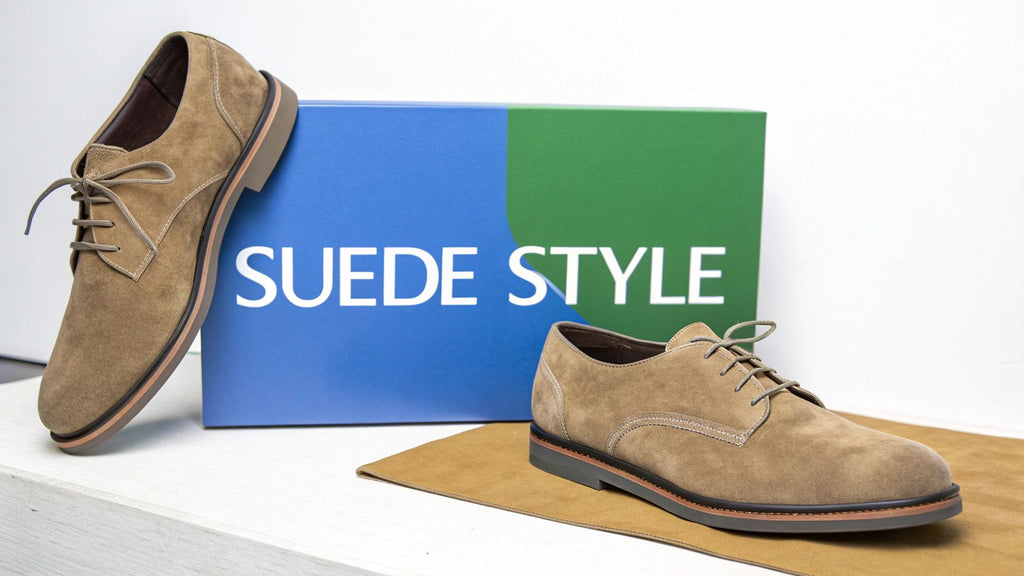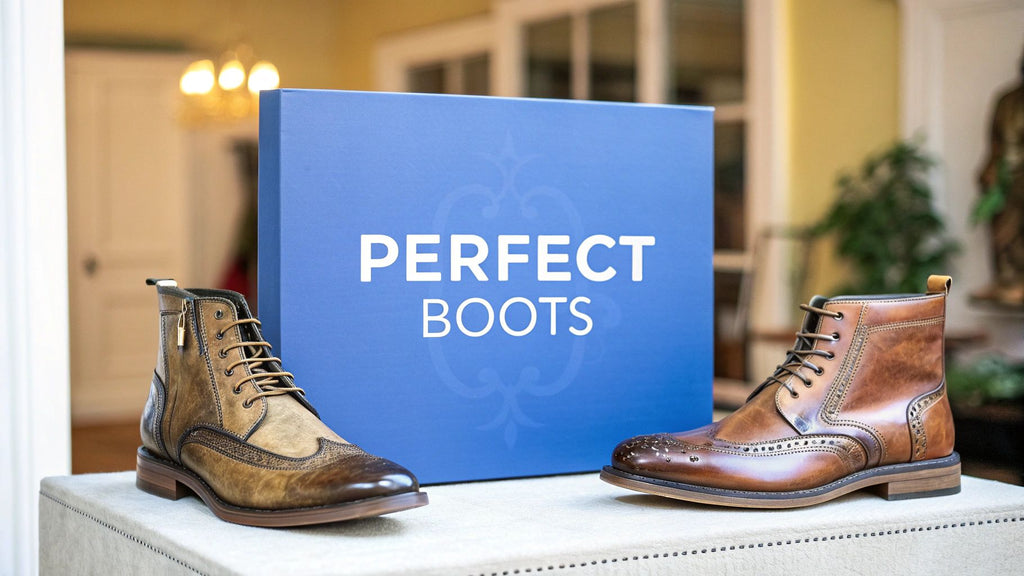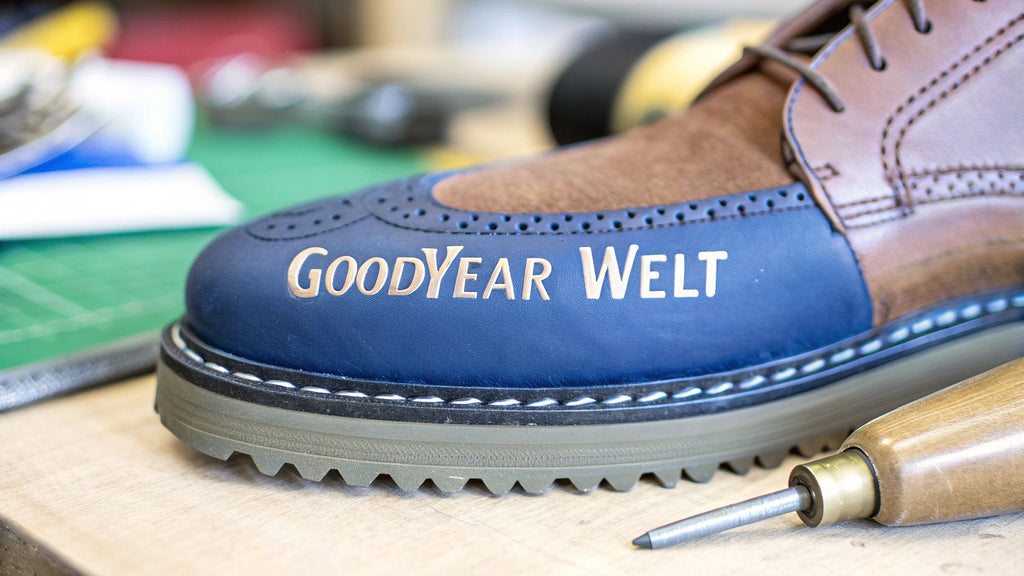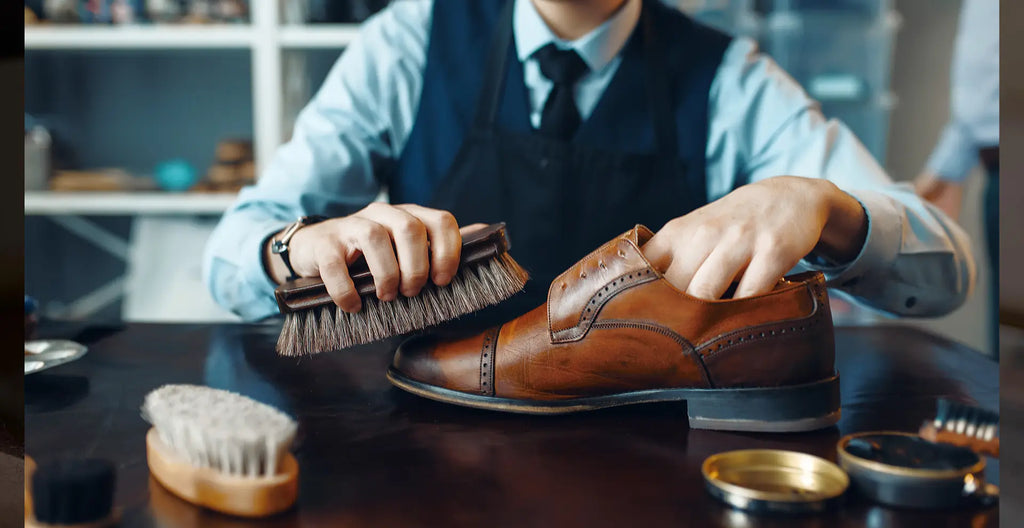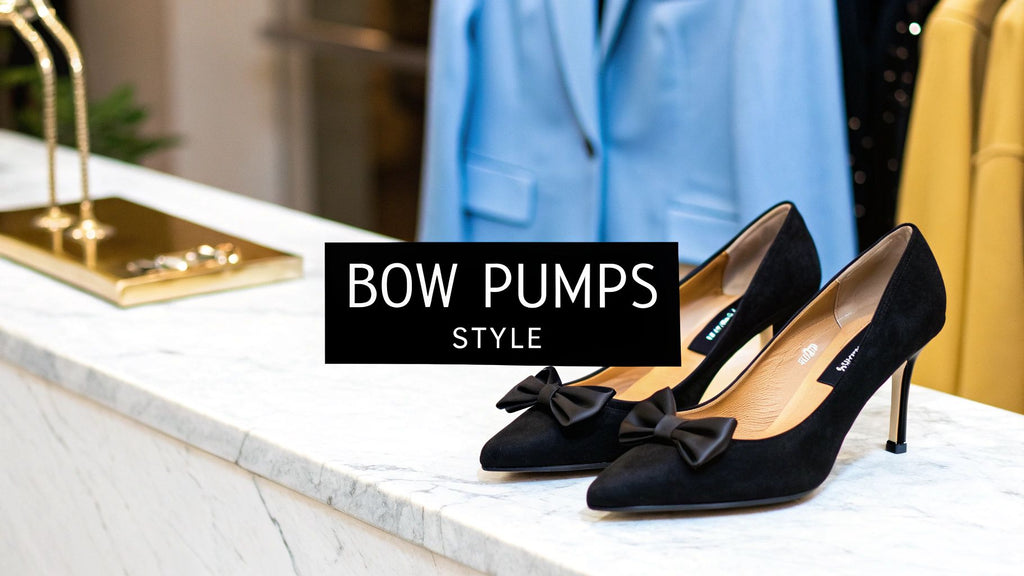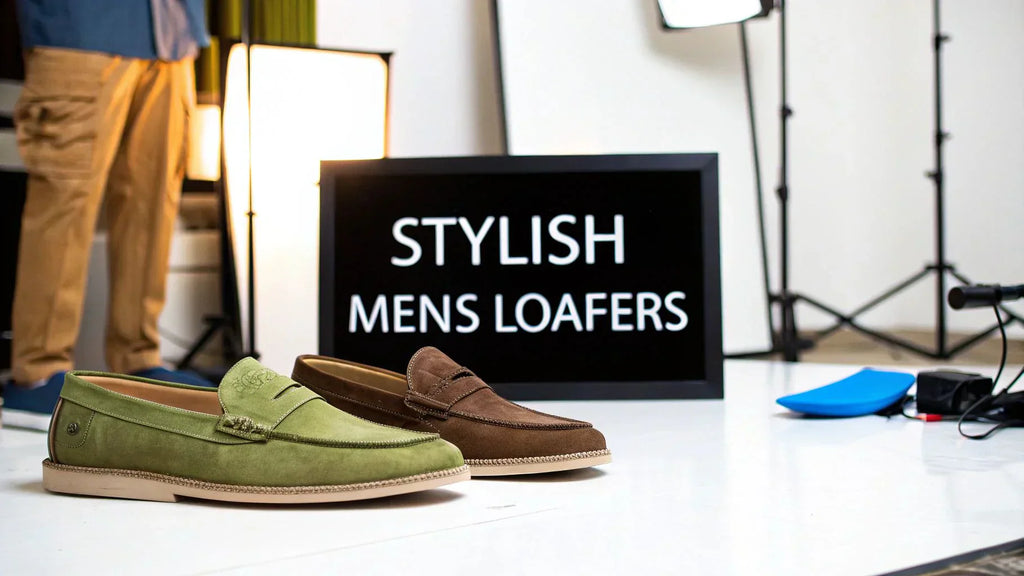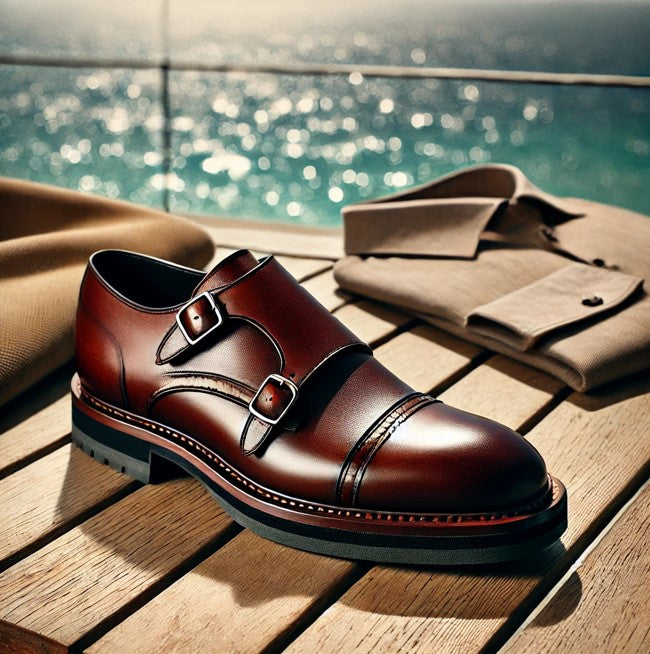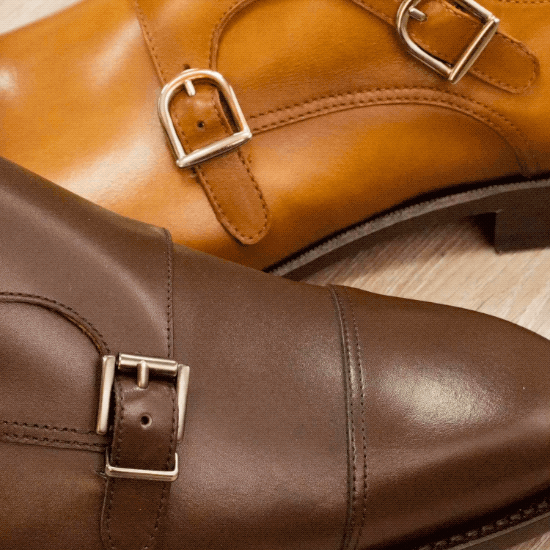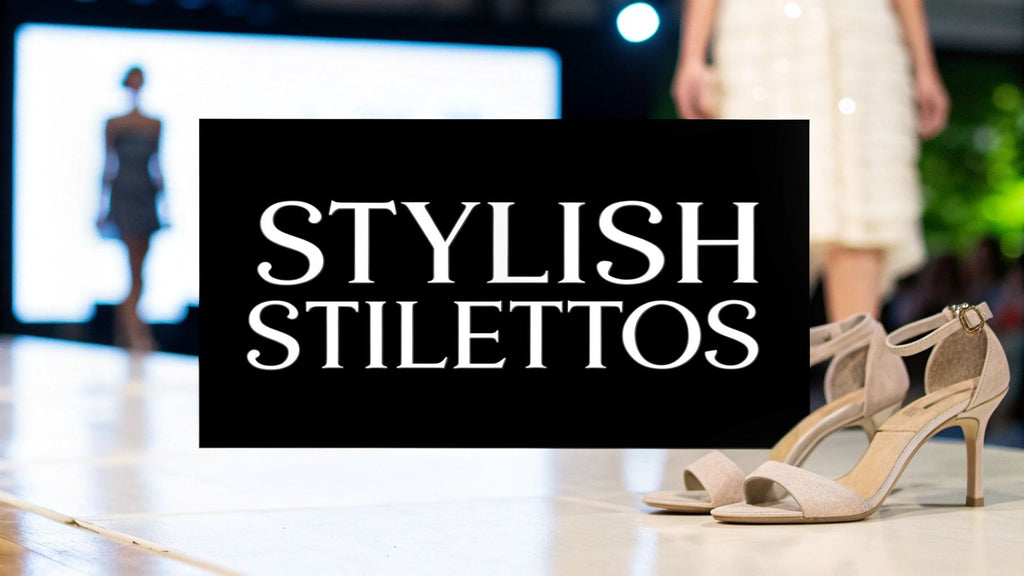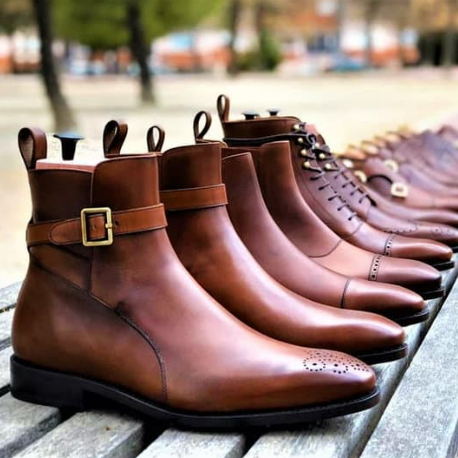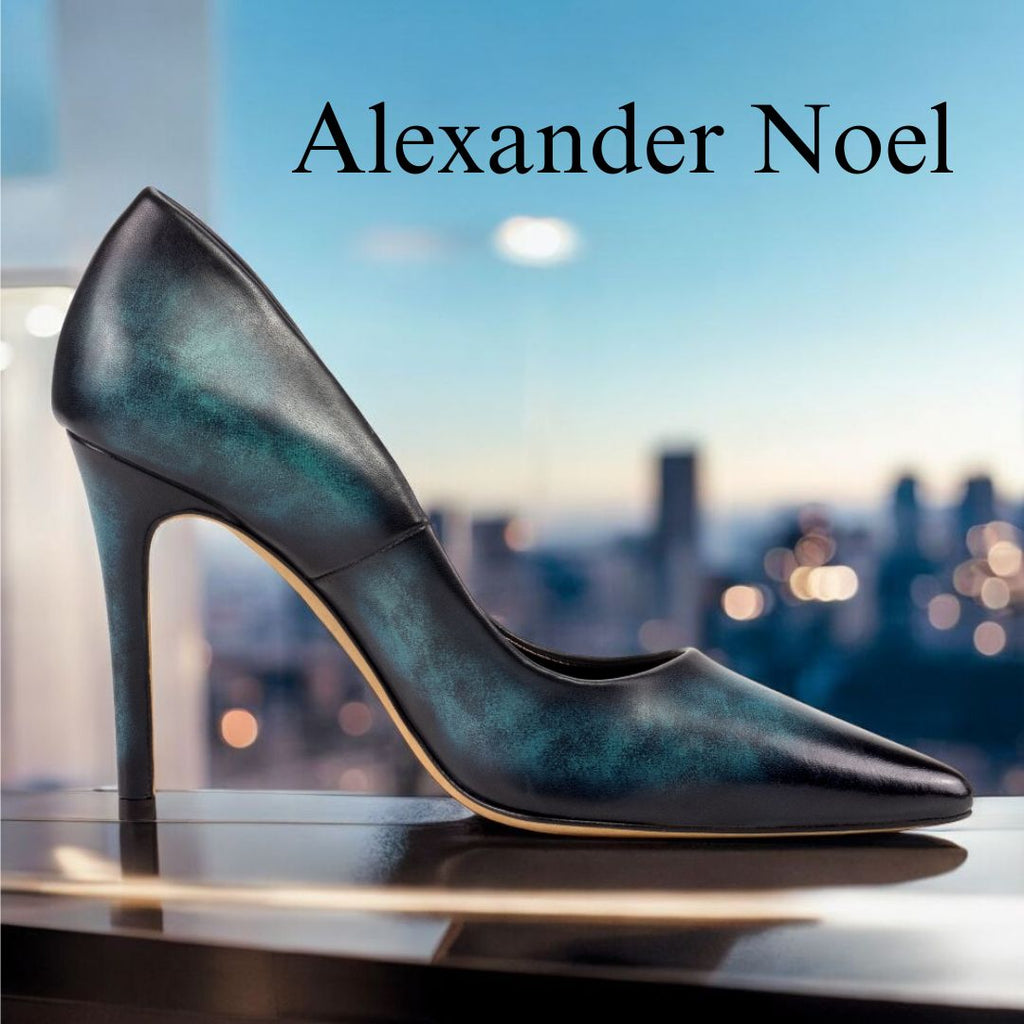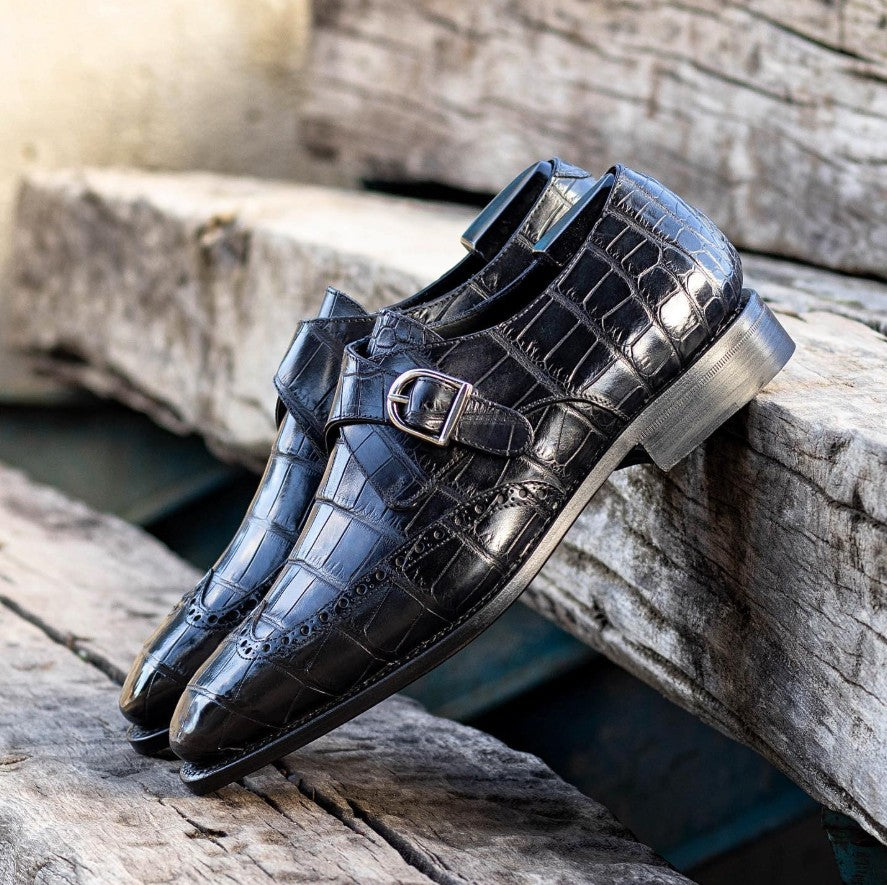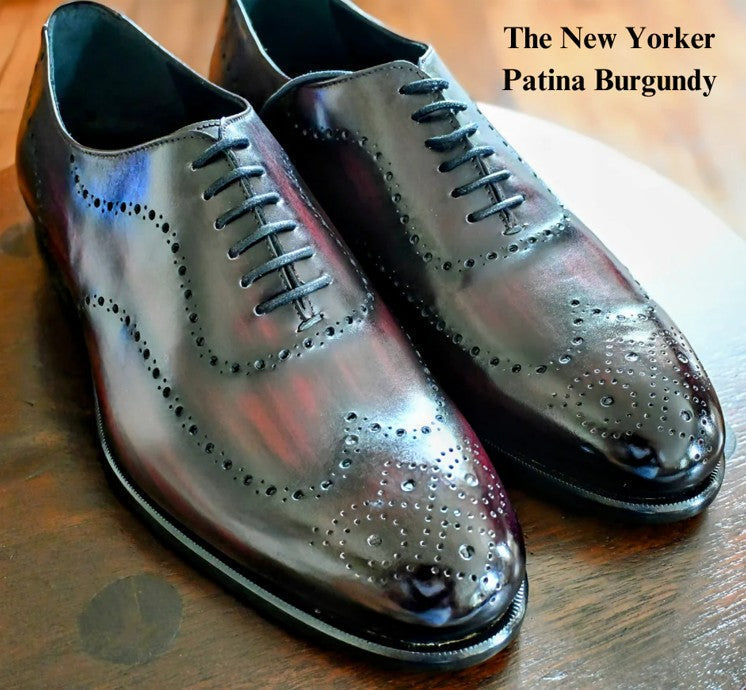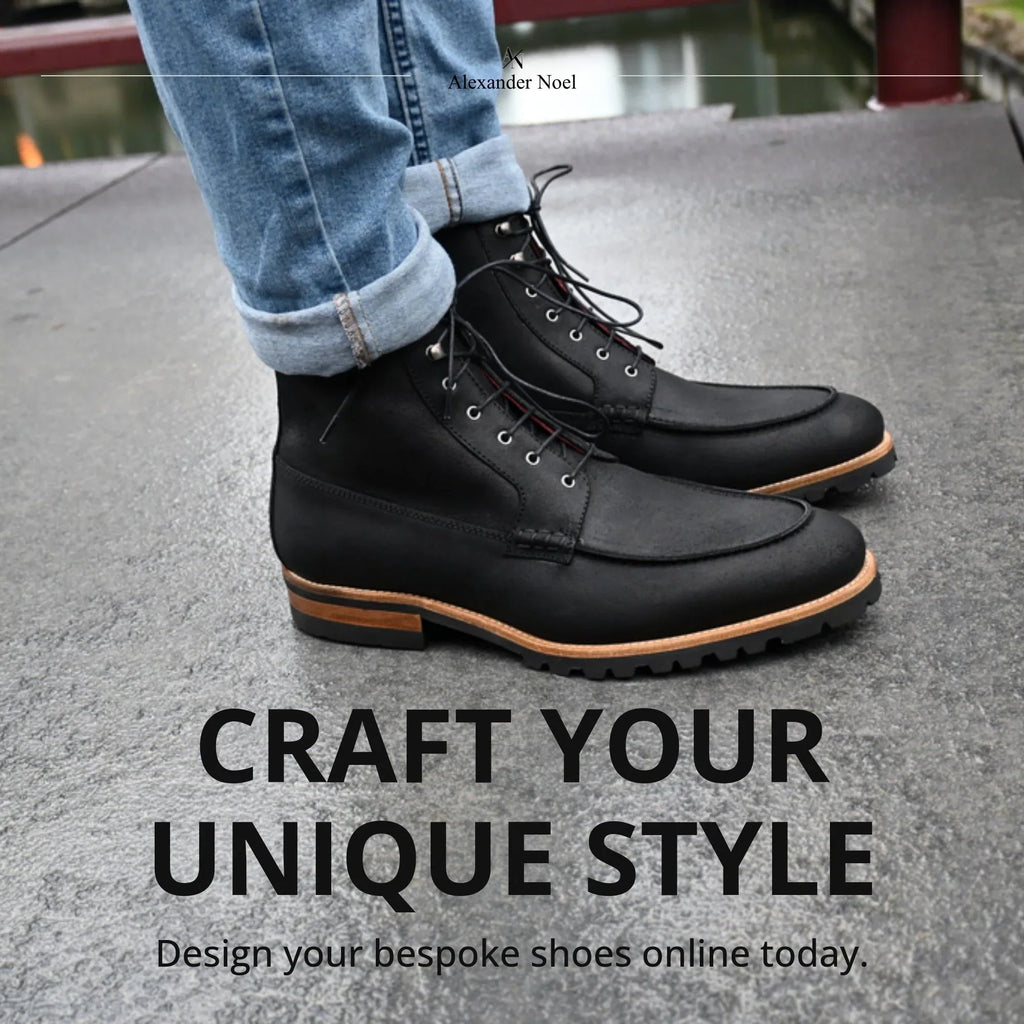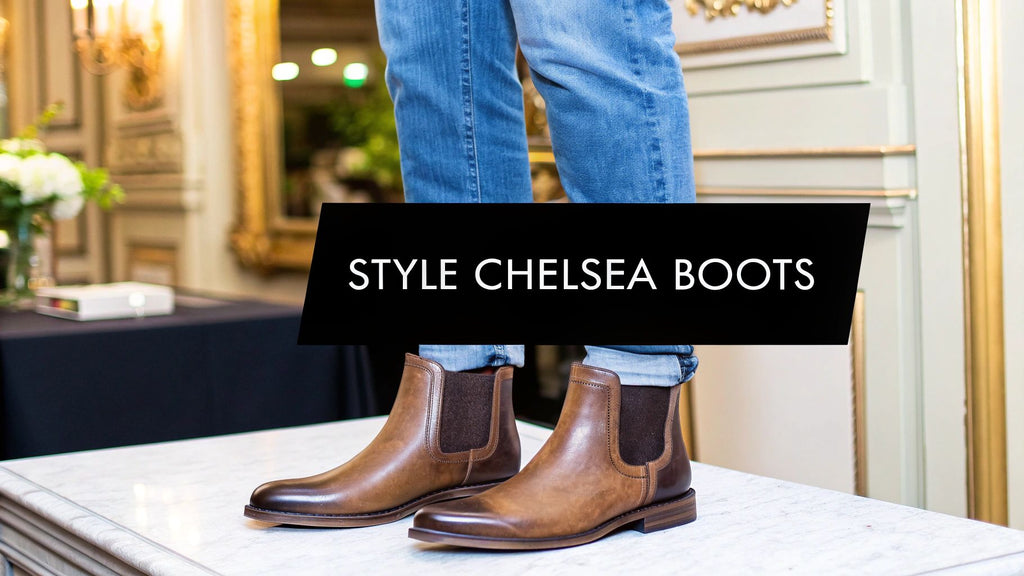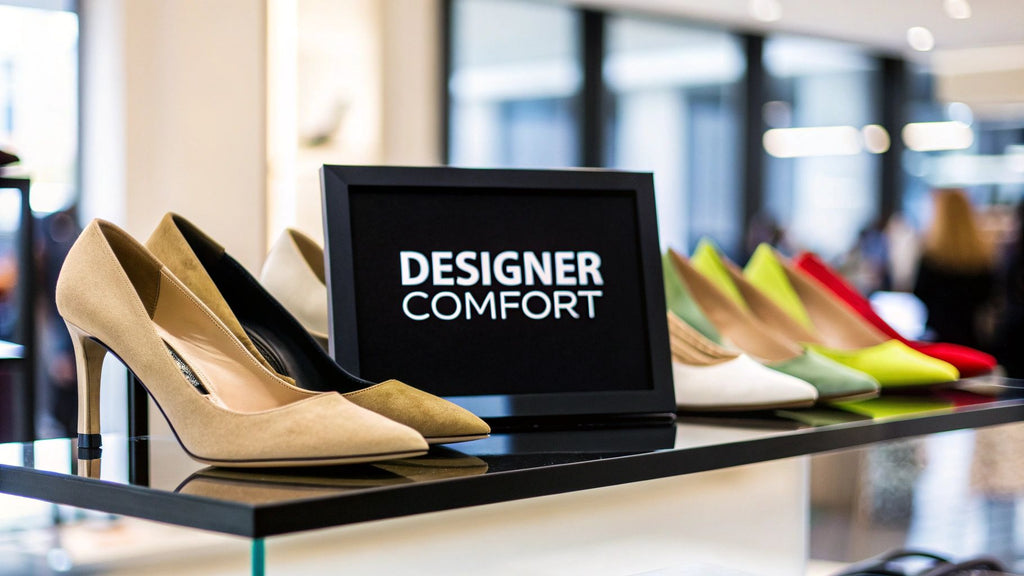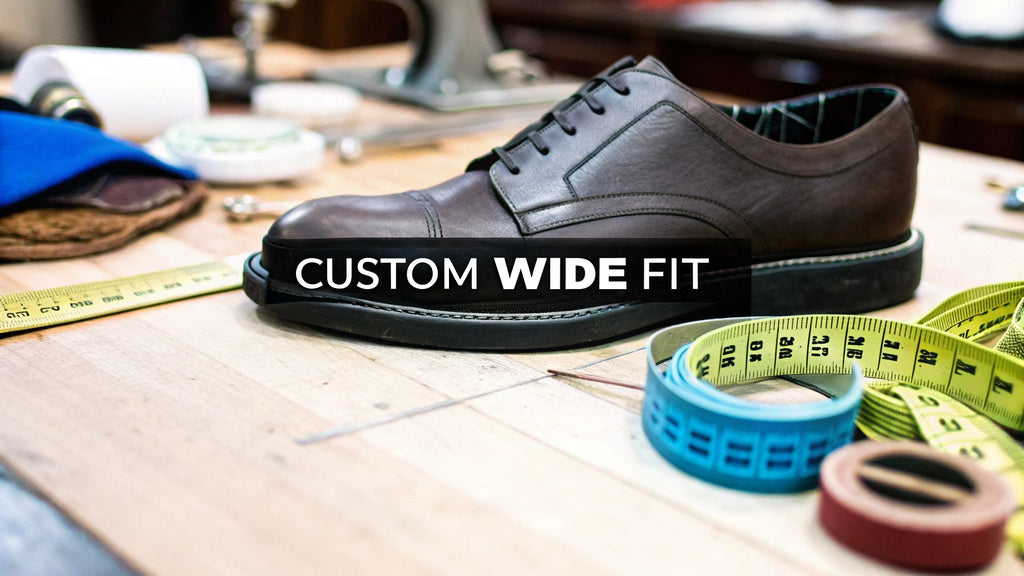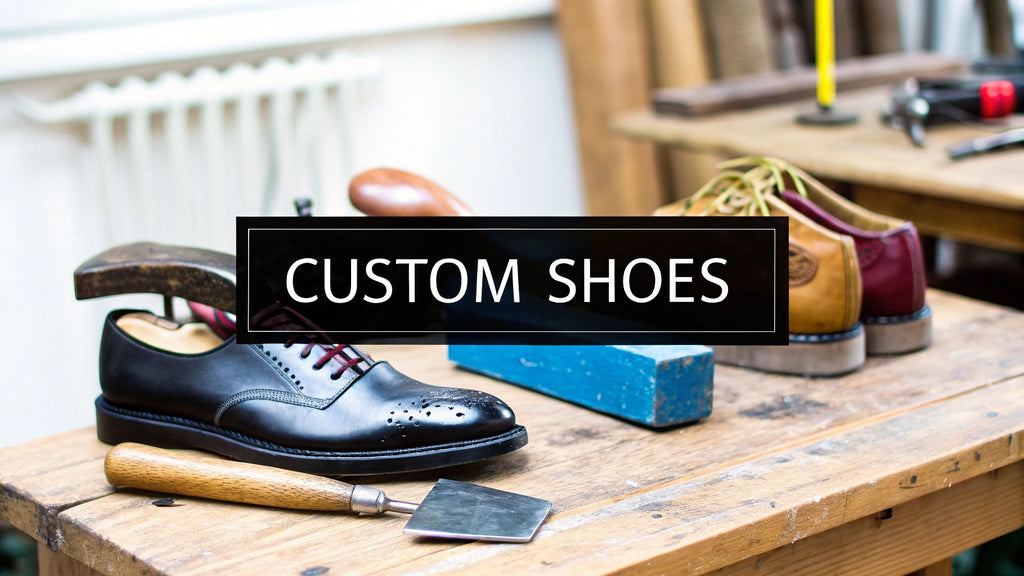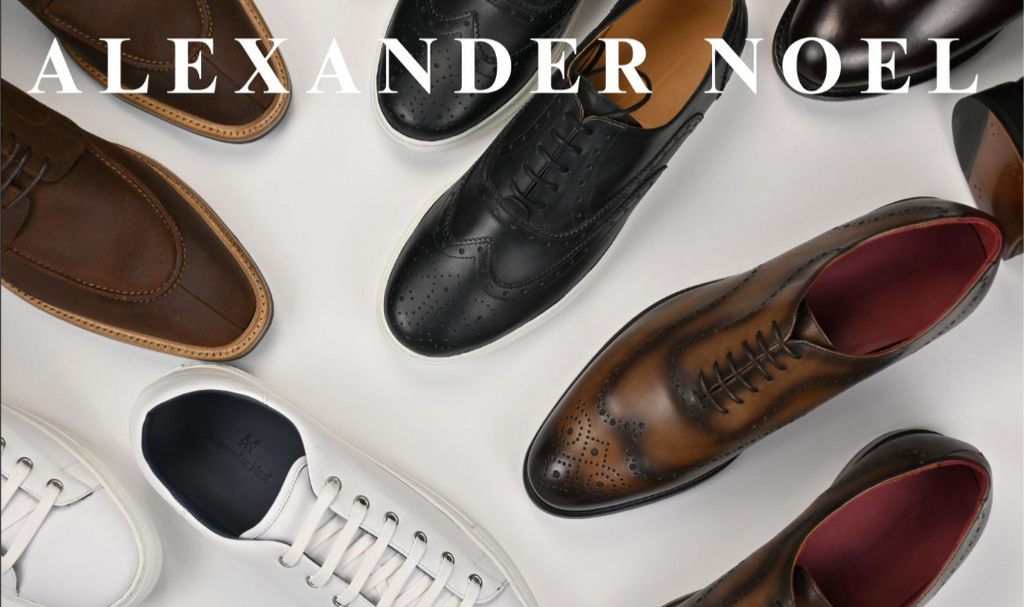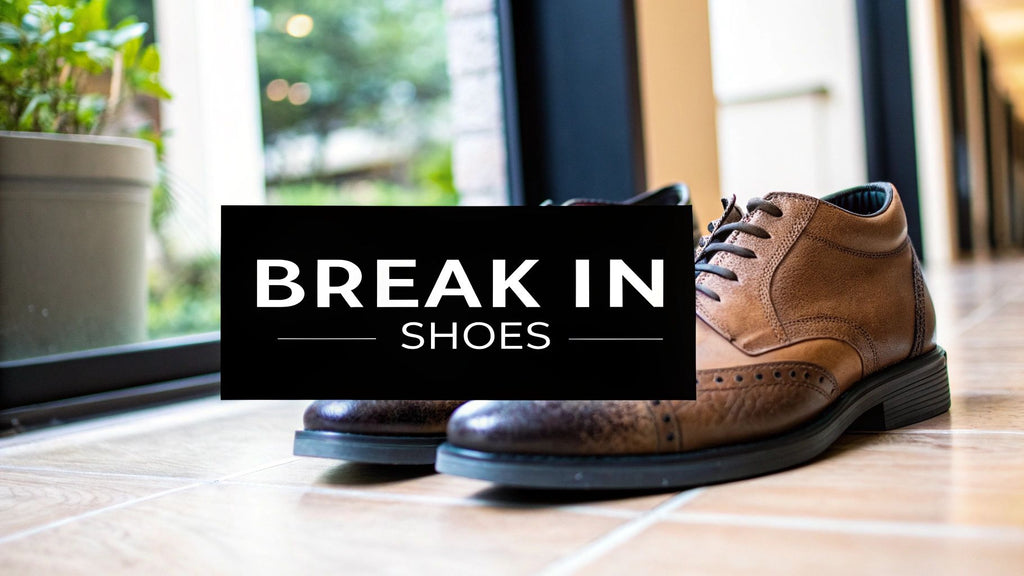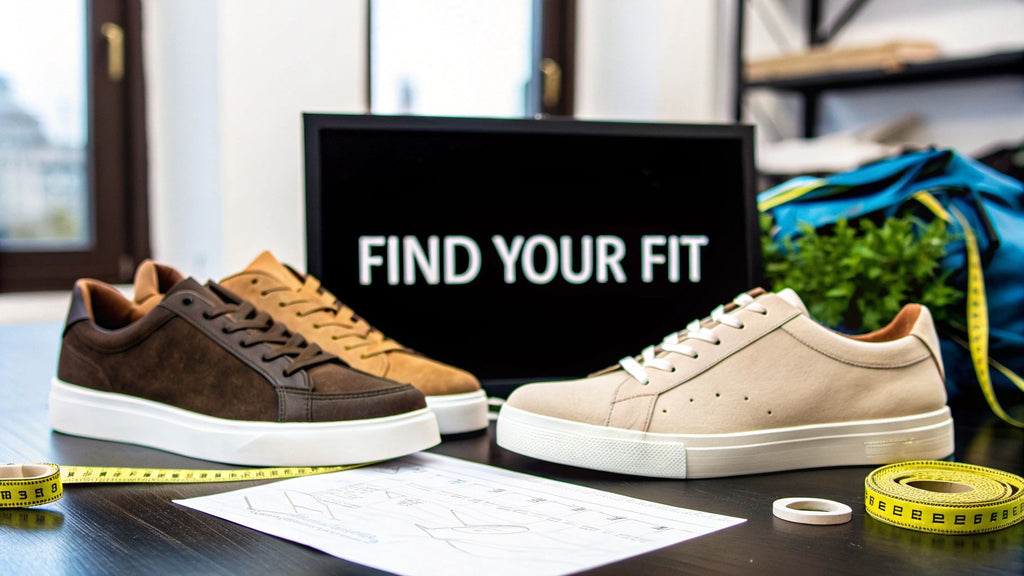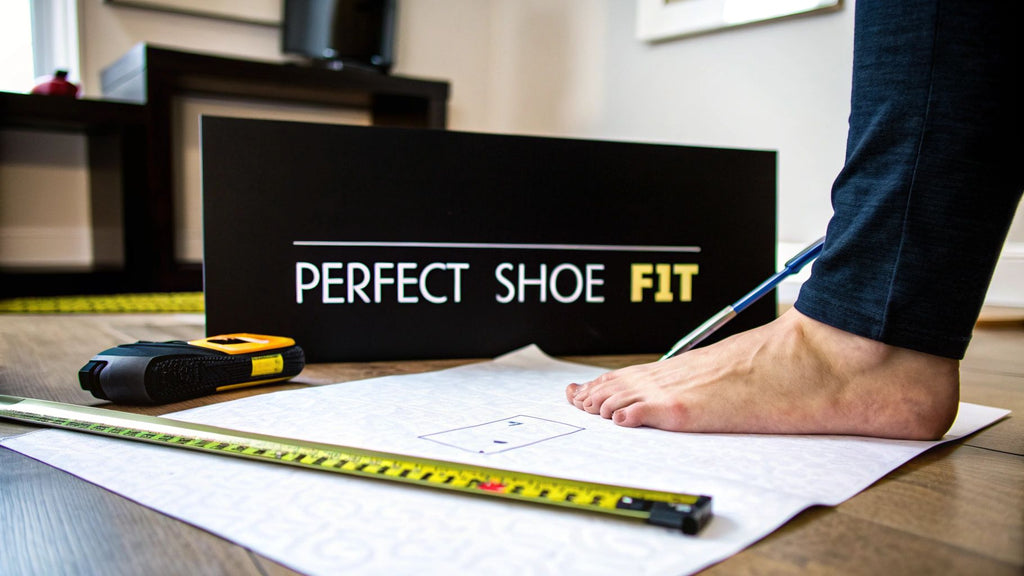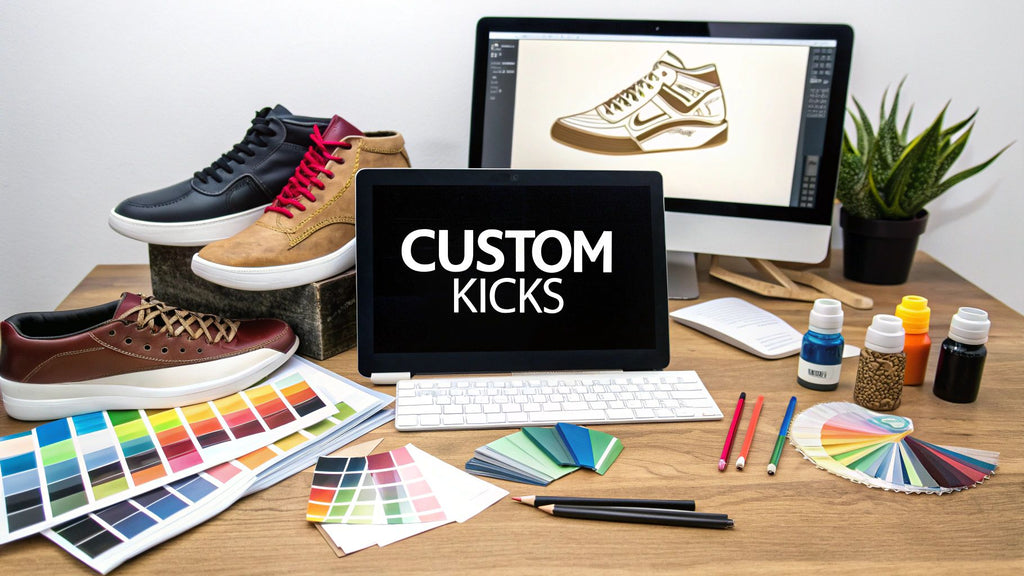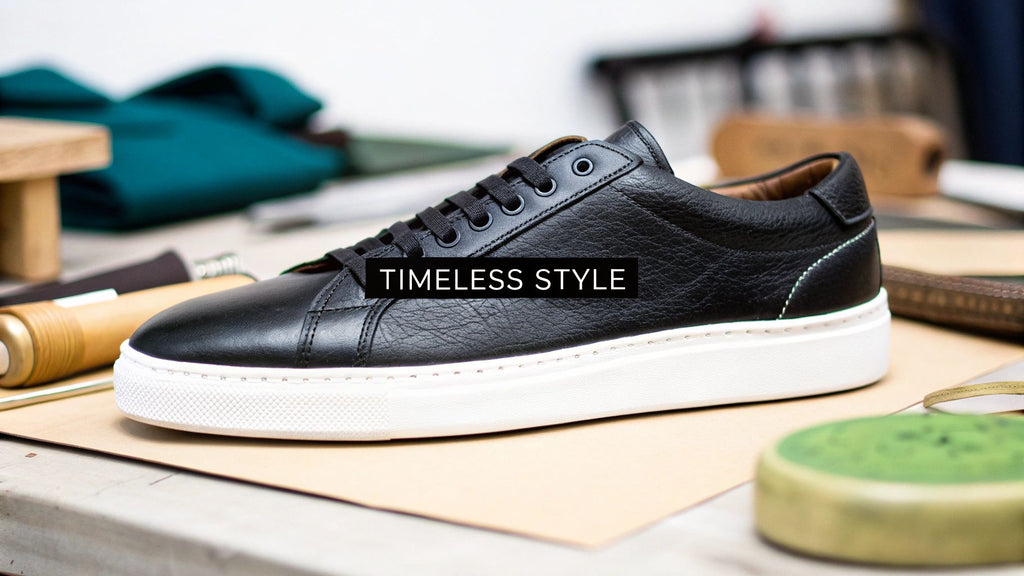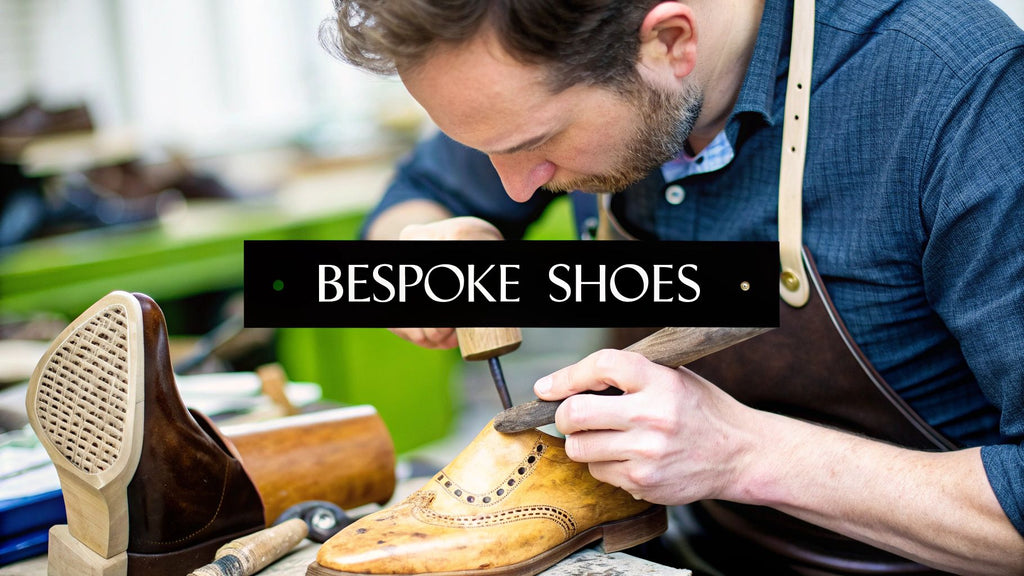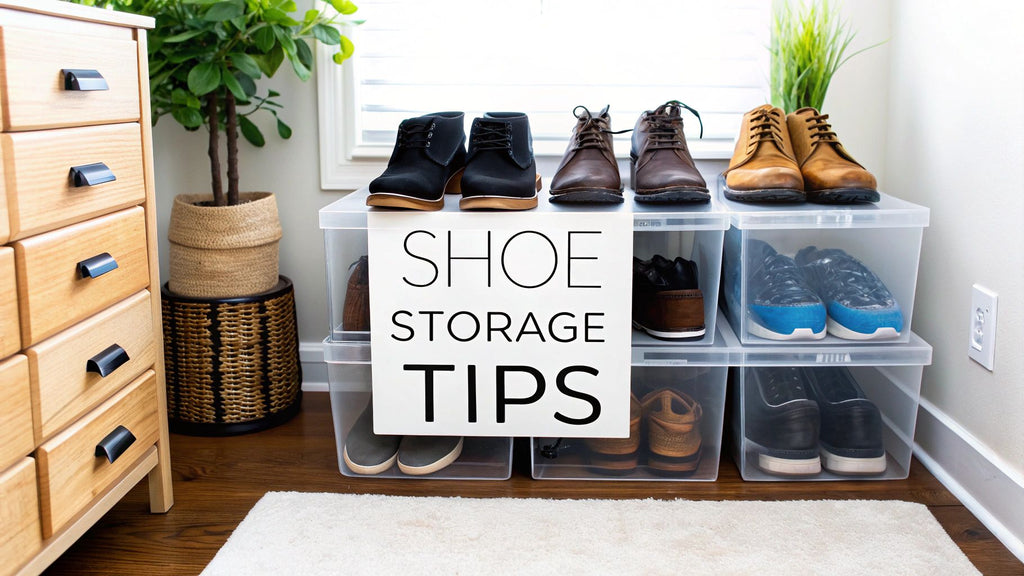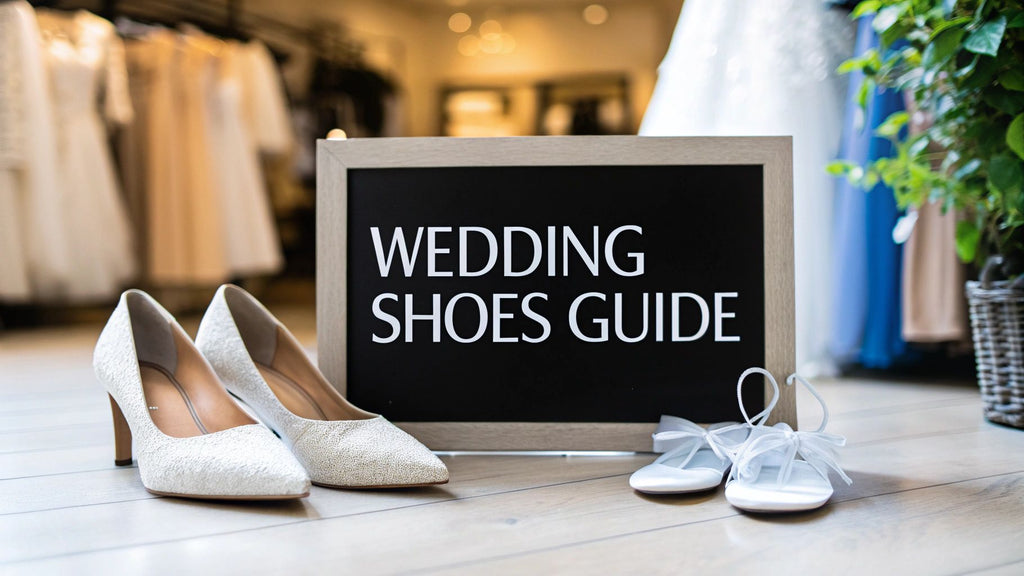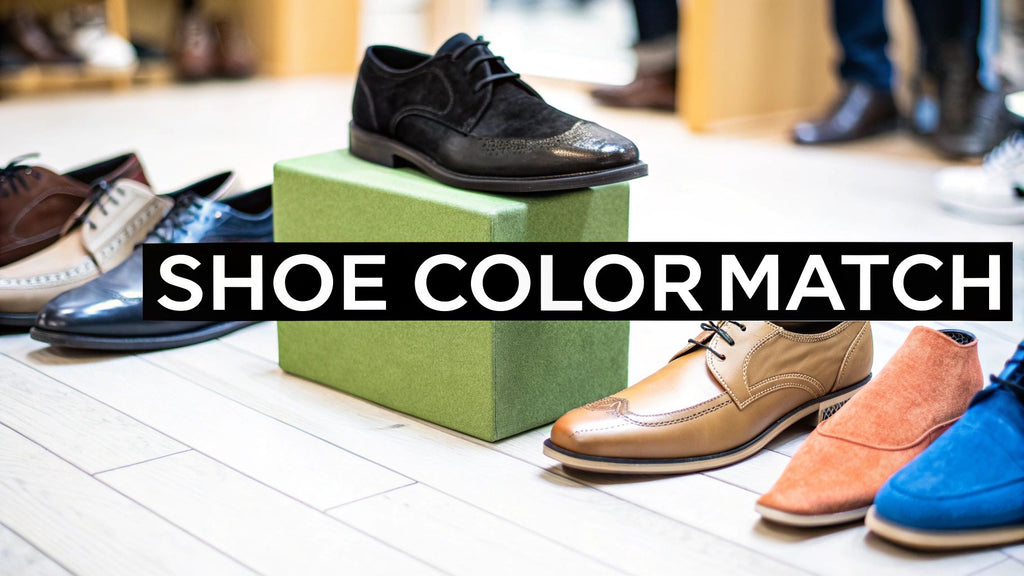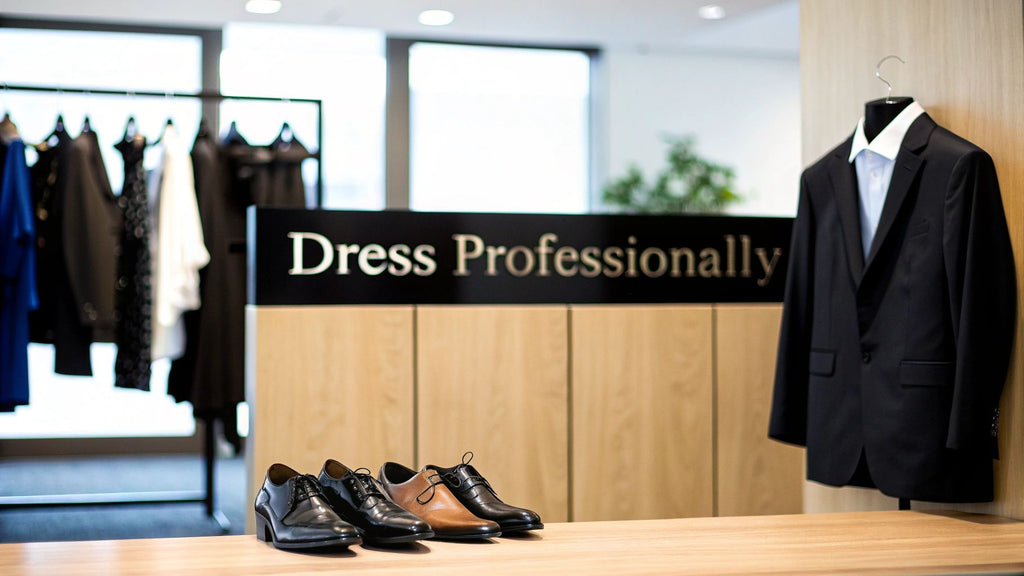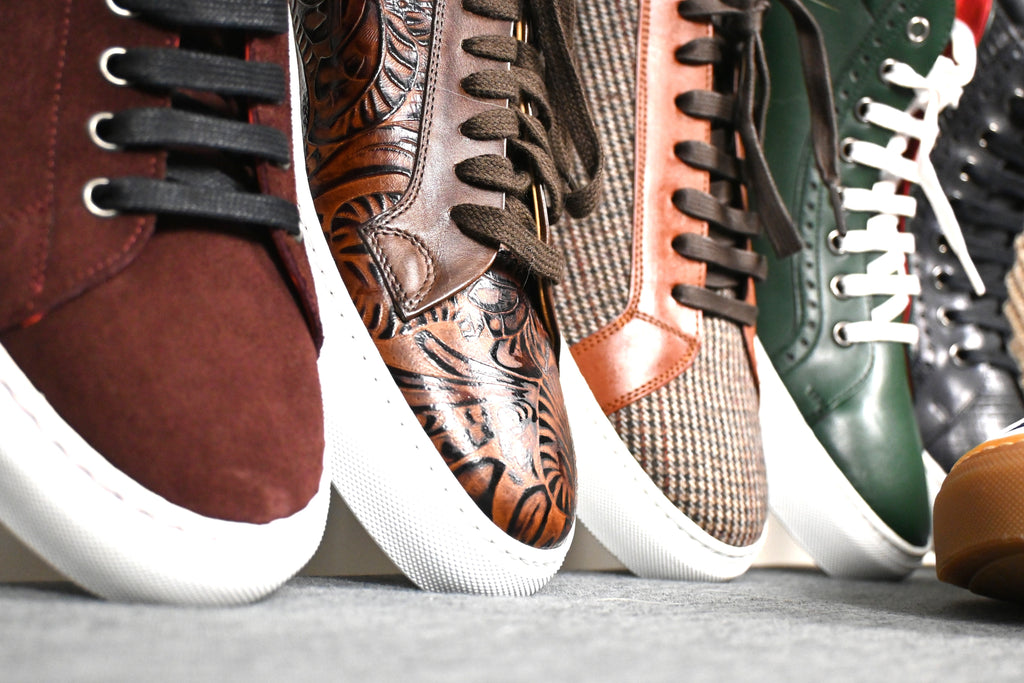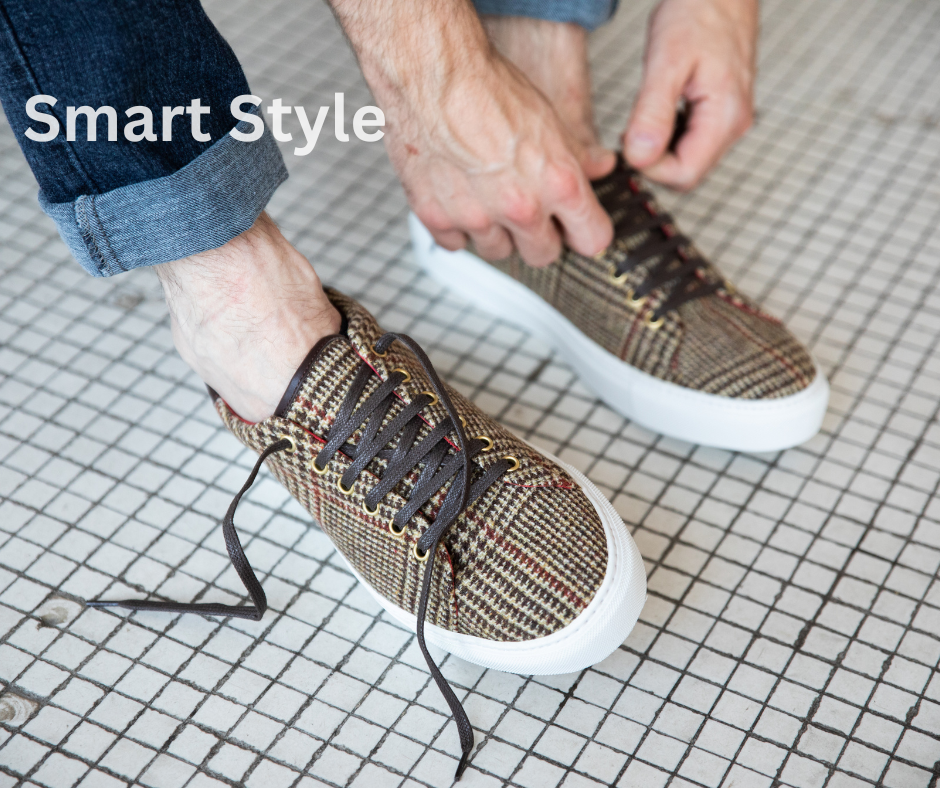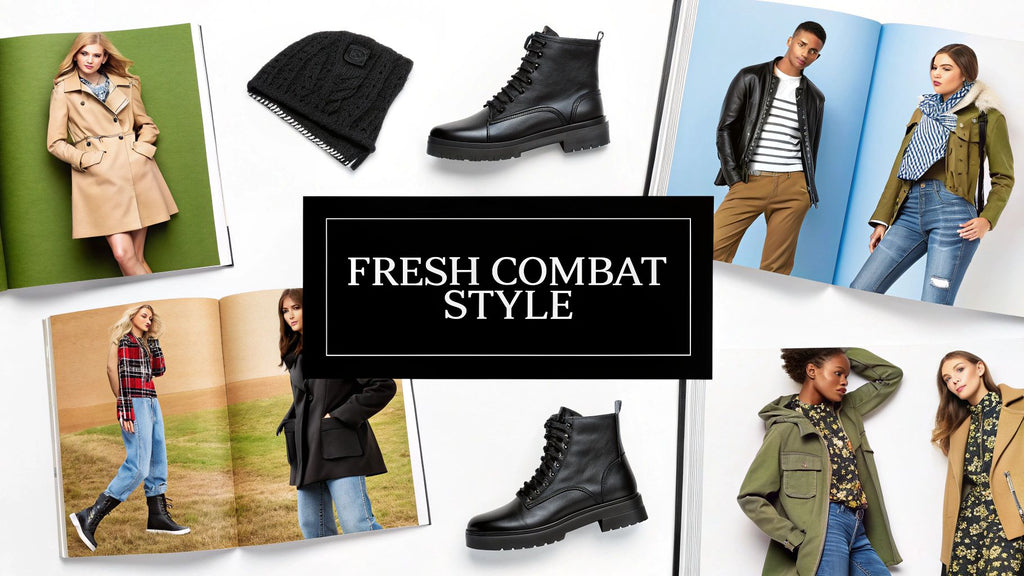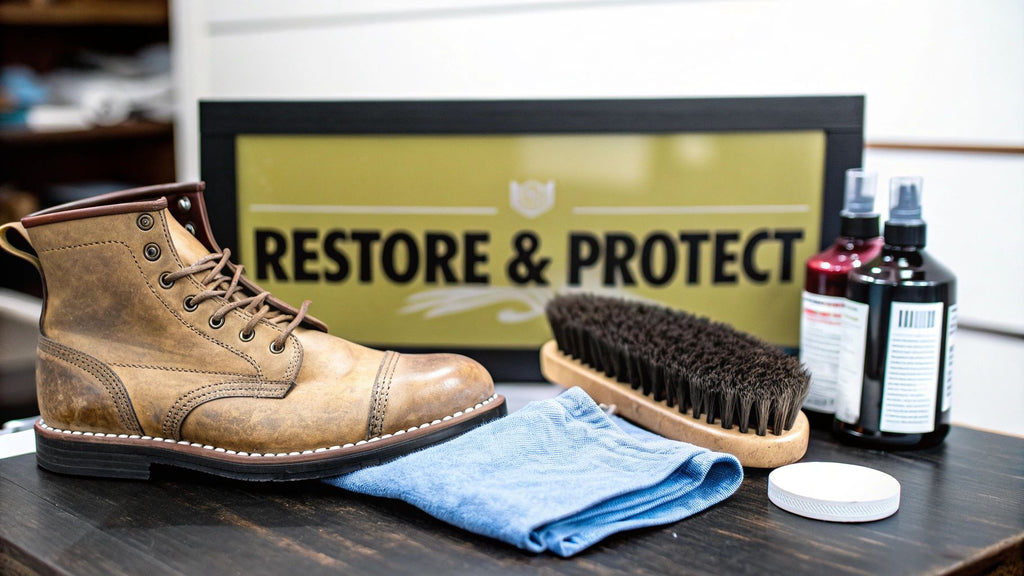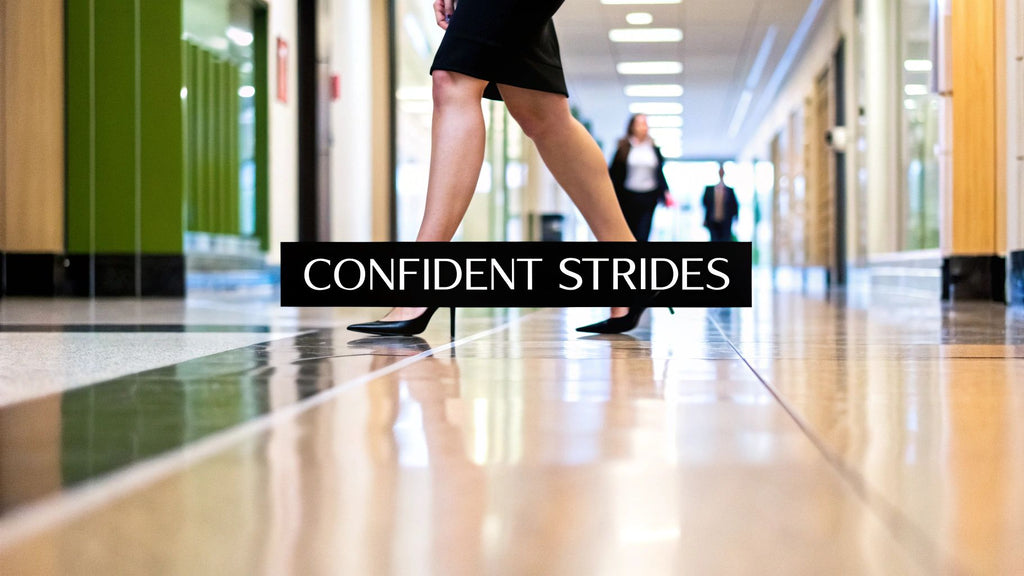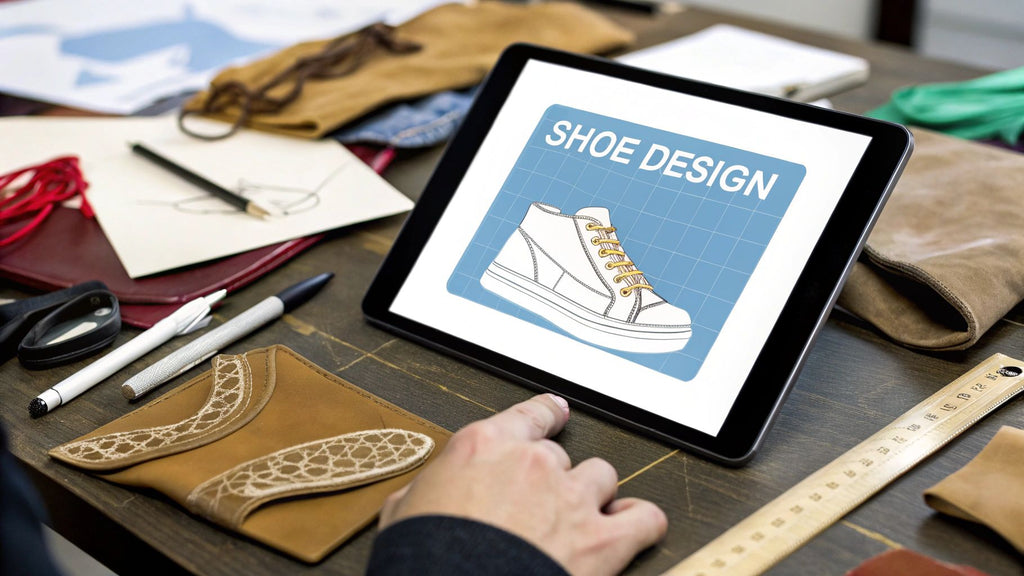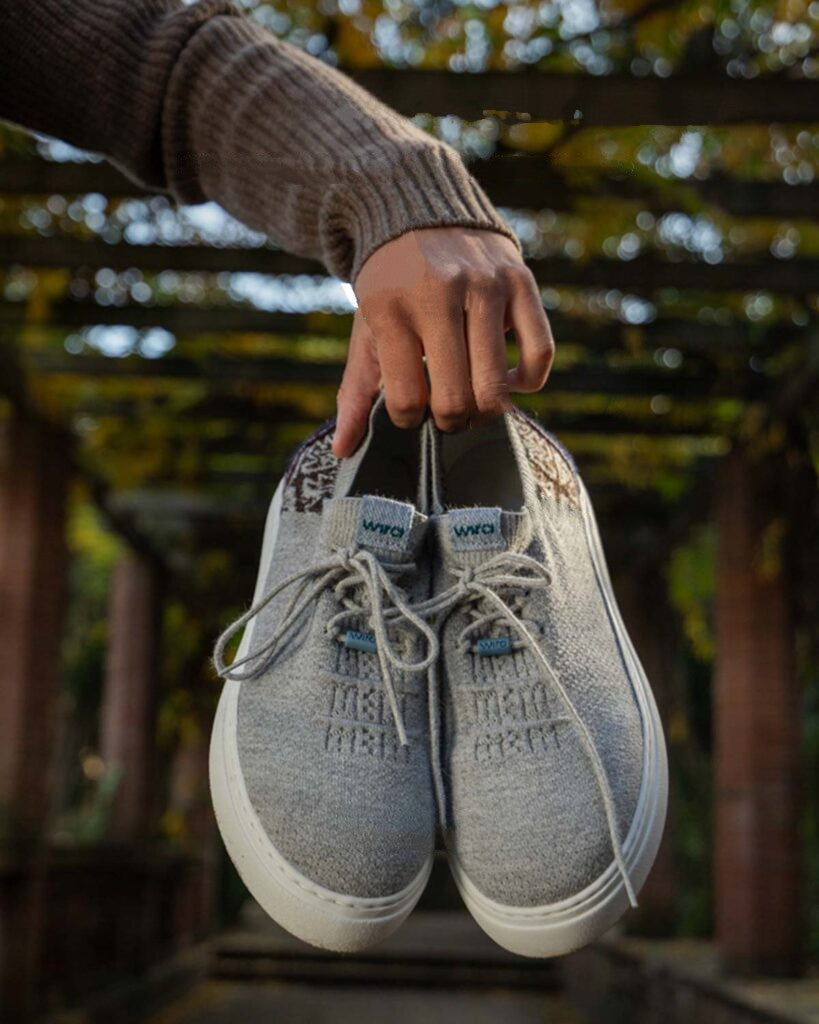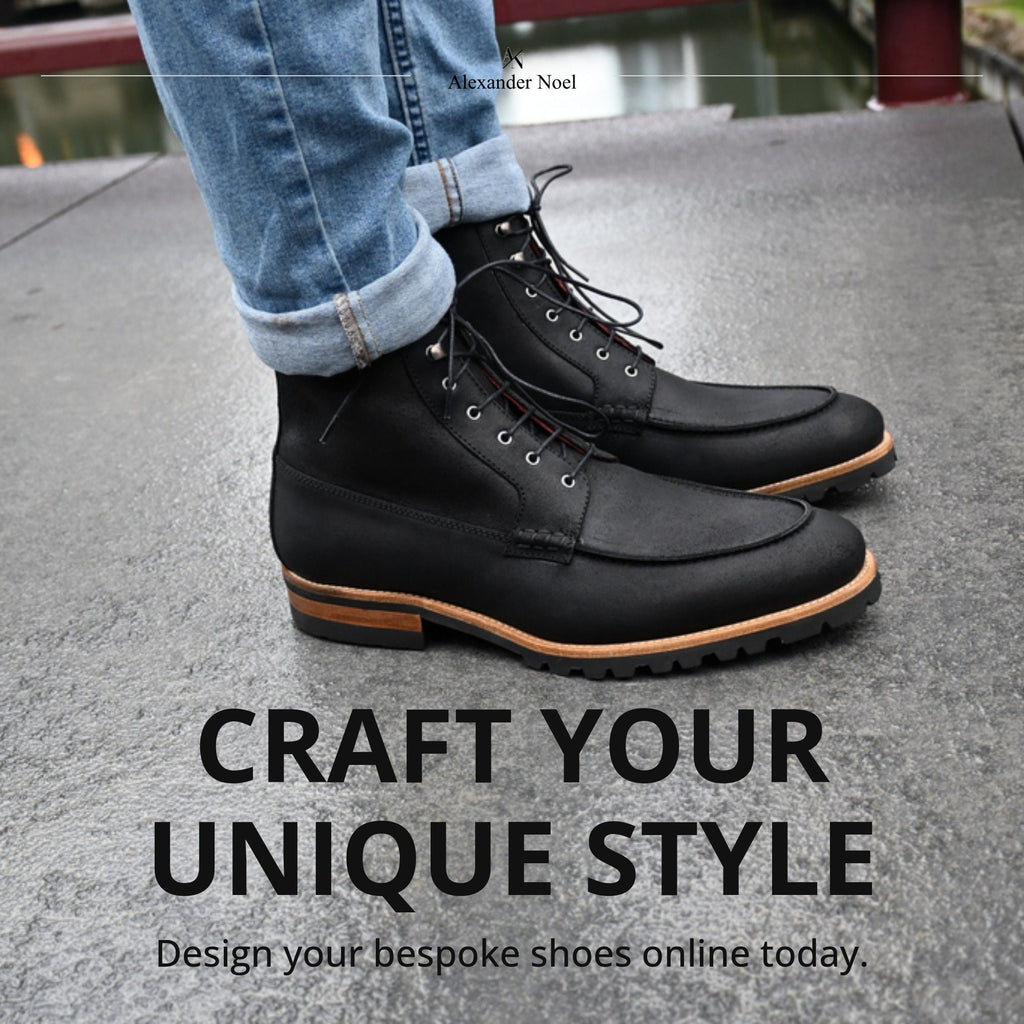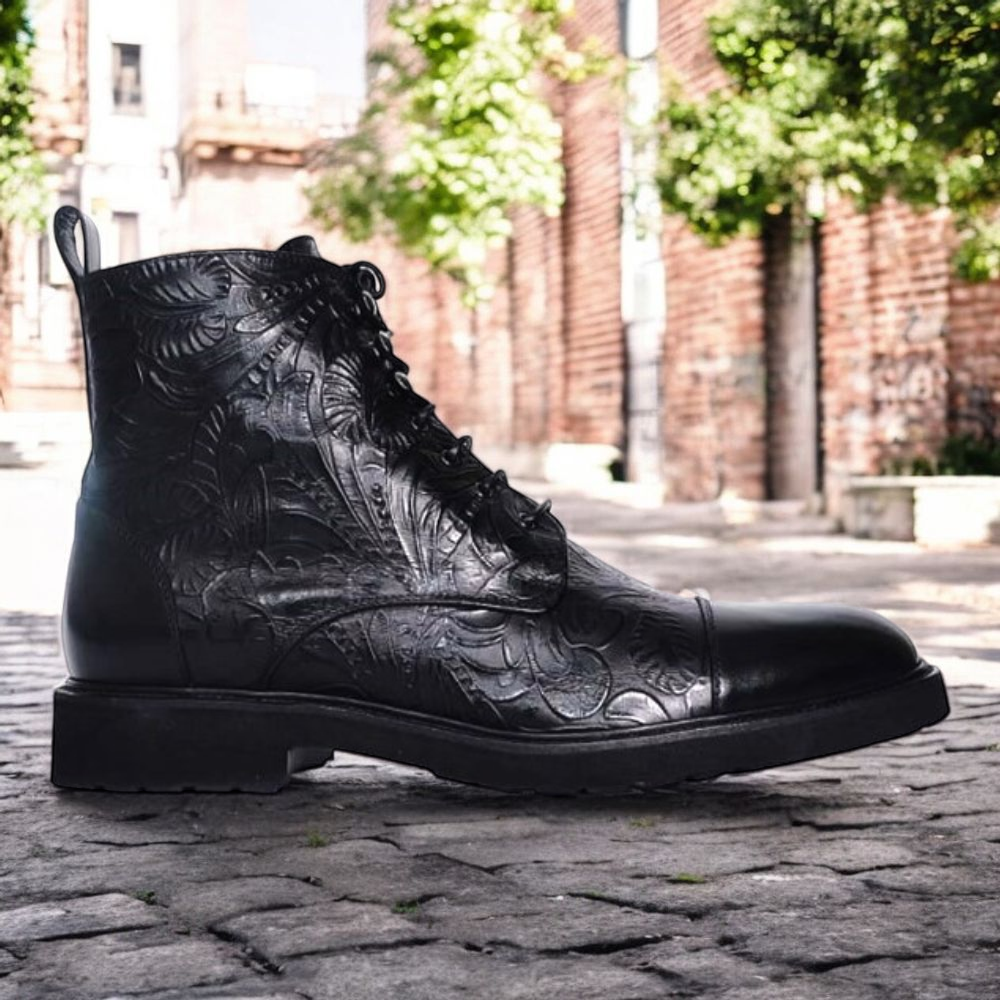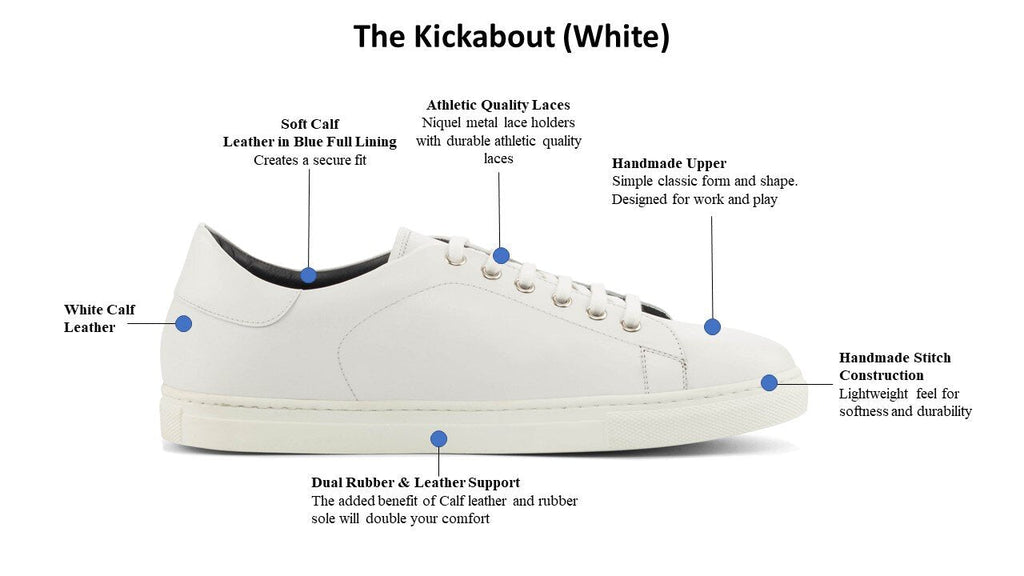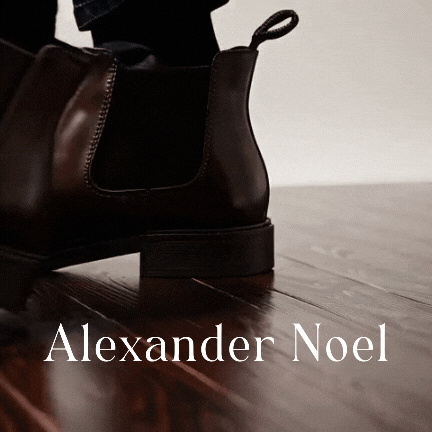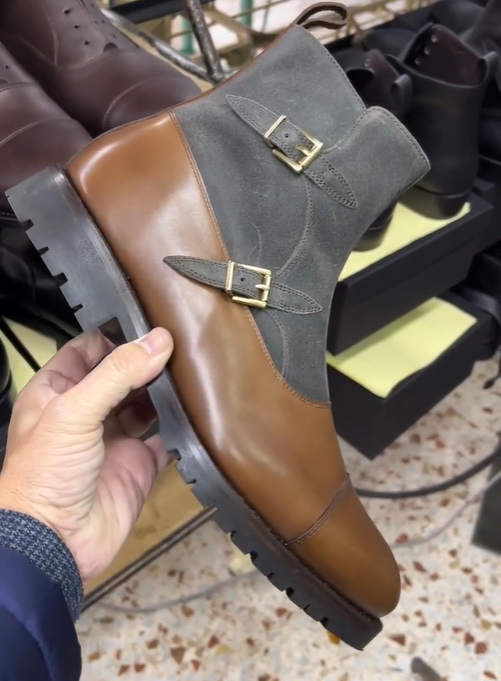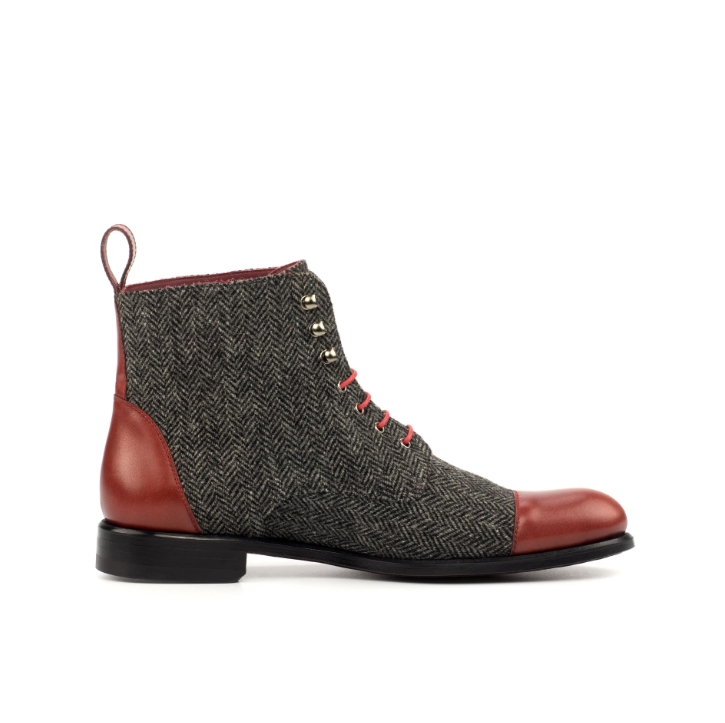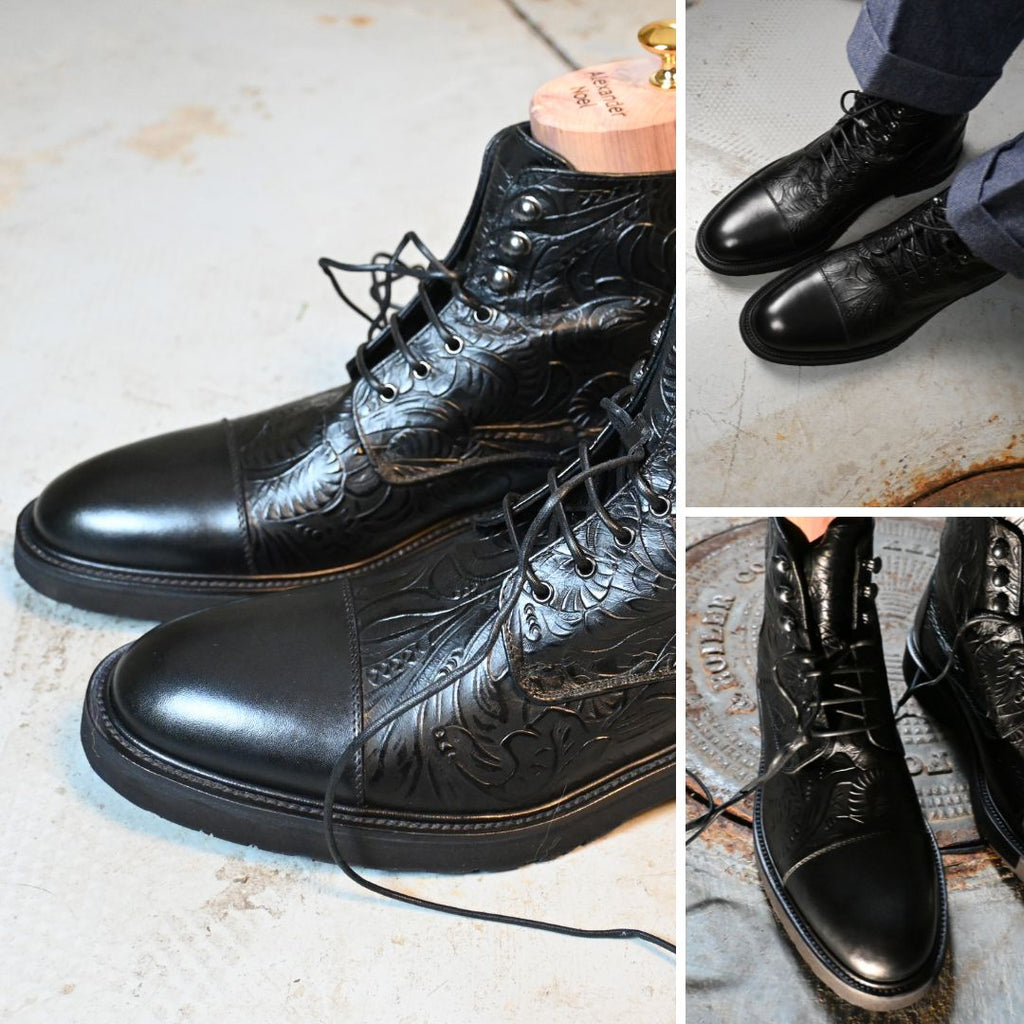
A Guide to Crafting Your Perfect Pair of Lace Up Boots

Lace-up boots are far more than just footwear; they are a cornerstone of a well-considered wardrobe, perfectly blending rugged practicality with an effortless sense of style. Their incredible popularity isn't an accident; it stems from a unique ability to provide a secure, personalized fit while creating an iconic silhouette that complements almost any look.

The Enduring Appeal of Lace-Up Ankle Boots
From their purely functional origins to their current status as a fashion icon, the lace-up ankle boot has a rich and compelling story. Unlike a simple slip-on, the signature lacing system allows for a completely custom fit. It provides superior ankle support and comfort that adapts to your foot, which is precisely what makes them such a reliable choice for everything from a city commute to a weekend adventure.
Think of this guide as an educational journey into understanding, choosing, and styling these versatile boots. We believe that knowing what goes into your footwear is the first step toward making a thoughtful investment. When you explore everything from core components to proper care, you'll gain a true appreciation for the traditional craftsmanship and modern innovation that make a truly great pair.
From Utility to Style Icon
The journey of the lace-up ankle boot is a fascinating one, starting as a utilitarian necessity before becoming a symbol of personal style. Originally, they were designed for one purpose: durable protection for laborers and soldiers. Form was dictated entirely by function. You can learn more about how different footwear styles evolved by exploring the history of iconic shoes in our detailed article.
Today, we celebrate that same robust DNA, but now it's paired with refined materials and contemporary designs. This blend of heritage and modern style is what gives them their lasting appeal. They carry a story of resilience while fitting seamlessly into the modern wardrobe.
The true value of a lace-up ankle boot lies in its adaptability. It’s one of the few pieces of footwear that feels equally at home on a factory floor, a forest trail, or a fashion runway, proving that great design is truly timeless.
Why They Remain a Wardrobe Staple
So, what's the secret to their staying power? It's simple: they offer an unmatched combination of practicality and aesthetic versatility. This balance empowers you to build a wardrobe with fewer, better pieces.
- Personalized Comfort: The adjustable lacing ensures a snug, supportive fit. This reduces heel slippage and provides stability, making them incredibly comfortable for all-day wear.
- Style Versatility: You can dress them up or down with ease. They look just as good with rugged denim as they do with tailored trousers or even dresses and skirts.
- Durability and Longevity: Quality lace-up boots are often built using time-honored techniques and premium materials, which makes them a long-lasting investment in your personal style.
Our goal is to connect you with footwear that not only looks incredible but is also built with integrity by our artisan partners around the globe. By understanding what makes a great boot, you can confidently choose—or design—a pair that reflects your style and is crafted to last for years.
Decoding Boot Anatomy and Design
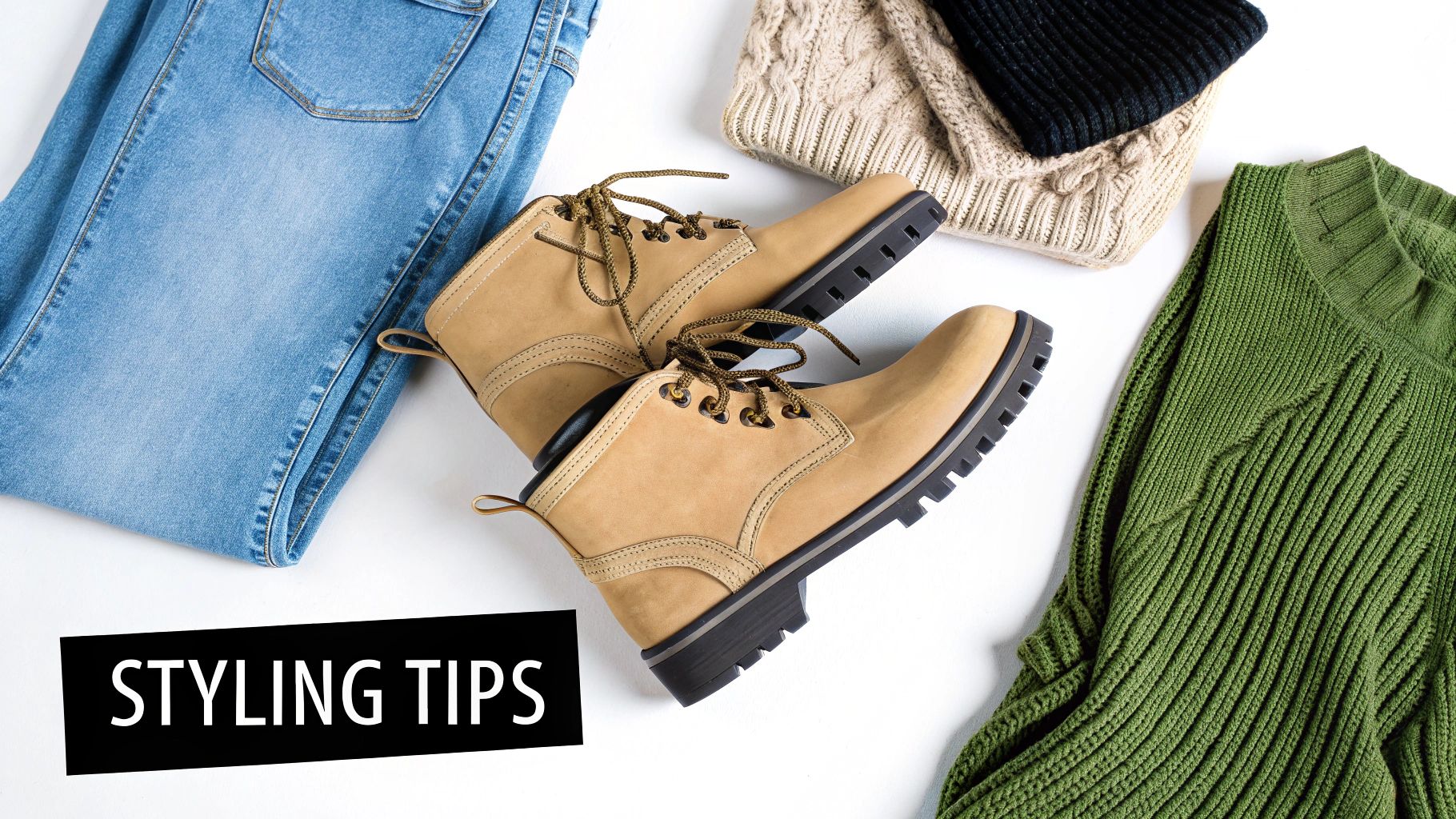
To truly appreciate what makes a great pair of lace up ankle boots special, it helps to understand how they’re constructed. Each part serves a purpose, and they all work together to deliver comfort, style, and durability. Think of it like looking under the hood of a classic car—the real magic lies in the details you don't always see at first glance.
Knowing the language of boot design transforms you from a casual shopper into an informed connoisseur. You begin to see not just a boot, but the thoughtful craftsmanship behind it.
The Foundation and Upper Structure
Every boot has a foundation and an upper structure, and the way these parts are joined gives a boot its unique character.
The outsole is what meets the pavement. It’s the tire of your boot, providing traction and protecting you from the elements. You’ll find them in everything from traditional leather to durable modern rubber, each offering a different feel and grip.
Above that is the upper, which is everything else you see. This is where the boot's personality truly comes to life. It’s crafted from several pieces of material—often premium leather—stitched together by skilled artisan hands.
Key Components of the Boot Upper
The upper isn't just one piece of material; it's a carefully assembled puzzle where every piece has a job. Learning to identify them helps you understand how a boot will fit and look.
- The Vamp: This is the section that covers the top of your foot, from the toe up to your ankle. It must flex with every step, so its quality is crucial for comfort.
- The Quarter: These are the rear and side panels that wrap around your heel and come forward to meet the vamp. This is typically where the lacing eyelets are located.
- The Toe Box: Right at the front, the toe box is where your toes reside. Its shape—whether it’s rounded, squared, or pointed—has a huge impact on both the style and comfort of the boot.
When a boot is well-made, all these components work in perfect harmony. The quarter provides support, while the vamp offers the flexibility you need to move. It’s a sure sign of quality craftsmanship.
Just as important is how the upper is attached to the sole. This construction method determines how long your boots will last and whether they can be repaired in the future. To dive deeper into these techniques, you can explore the art of shoe construction in our other guide.
Once you understand this anatomy, you're empowered. You can look past the surface and appreciate the engineering that goes into a truly great pair of boots. This ensures your next purchase isn't just a shoe, but a true investment in your personal style.

Finding Your Ideal Materials and Construction
The real soul of a pair of lace up ankle boots comes down to two things: the materials they're made from and how they're constructed. This is what separates a boot you'll wear for a season from one you'll have for a lifetime. When you get this part right, you're not just buying footwear; you're making an investment.
It's a decision more and more people are thinking about. The global market for lace-up boots is on track to grow from an estimated $3,126 million in 2025 to over $5,250 million by 2035. What’s driving this? A demand for boots that are as durable as they are versatile, with classic leather leading the charge for its unbeatable mix of toughness and style.
The Language of Leather
When it comes to boots, leather is king. But not all leather is created equal, and knowing the difference is crucial for choosing a pair that fits your life and your look. Each type has its own personality, from durability to the way it ages.
For instance, you might want to delve deeper into what makes full-grain leather stand out if you're looking for something that truly gets better with age.
- Full-Grain Leather: This is the highest quality leather available. It’s the top layer of the hide, complete with all its natural character and imperfections. It's incredibly strong, breathable, and over time, develops a beautiful patina that tells the story of your journey.
- Top-Grain Leather: Coming in a close second, top-grain leather has its surface sanded down to create a more uniform look. It's a bit less rugged than full-grain but offers great resistance to stains and daily wear.
- Suede: Famous for its soft, velvety feel, suede is made from the underside of the hide. It brings a touch of elegance to any boot but requires extra care to protect it from water and stains.
To help you choose, we’ve put together a simple guide comparing the most common materials you'll find.
Boot Material Comparison Guide
| Material | Key Characteristics | Best For | Care Level |
|---|---|---|---|
| Full-Grain Leather | The most durable and natural-looking leather. Ages beautifully, developing a rich patina. | Everyday wear, rugged use, and investment pieces that will last for years. | Moderate |
| Top-Grain Leather | Smooth, uniform appearance. More stain-resistant than full-grain. | Smart-casual and office settings where a polished look is desired. | Low |
| Suede | Soft, napped texture with a luxurious feel. | Fashion-forward looks and occasional wear, avoiding wet conditions. | High |
| Vegan Leather | Man-made material, often polyurethane. Water-resistant and easy to clean. | Budget-conscious buyers or those seeking animal-free alternatives. | Low |
Ultimately, the right material balances your style, your budget, and how much time you're willing to put into maintenance.
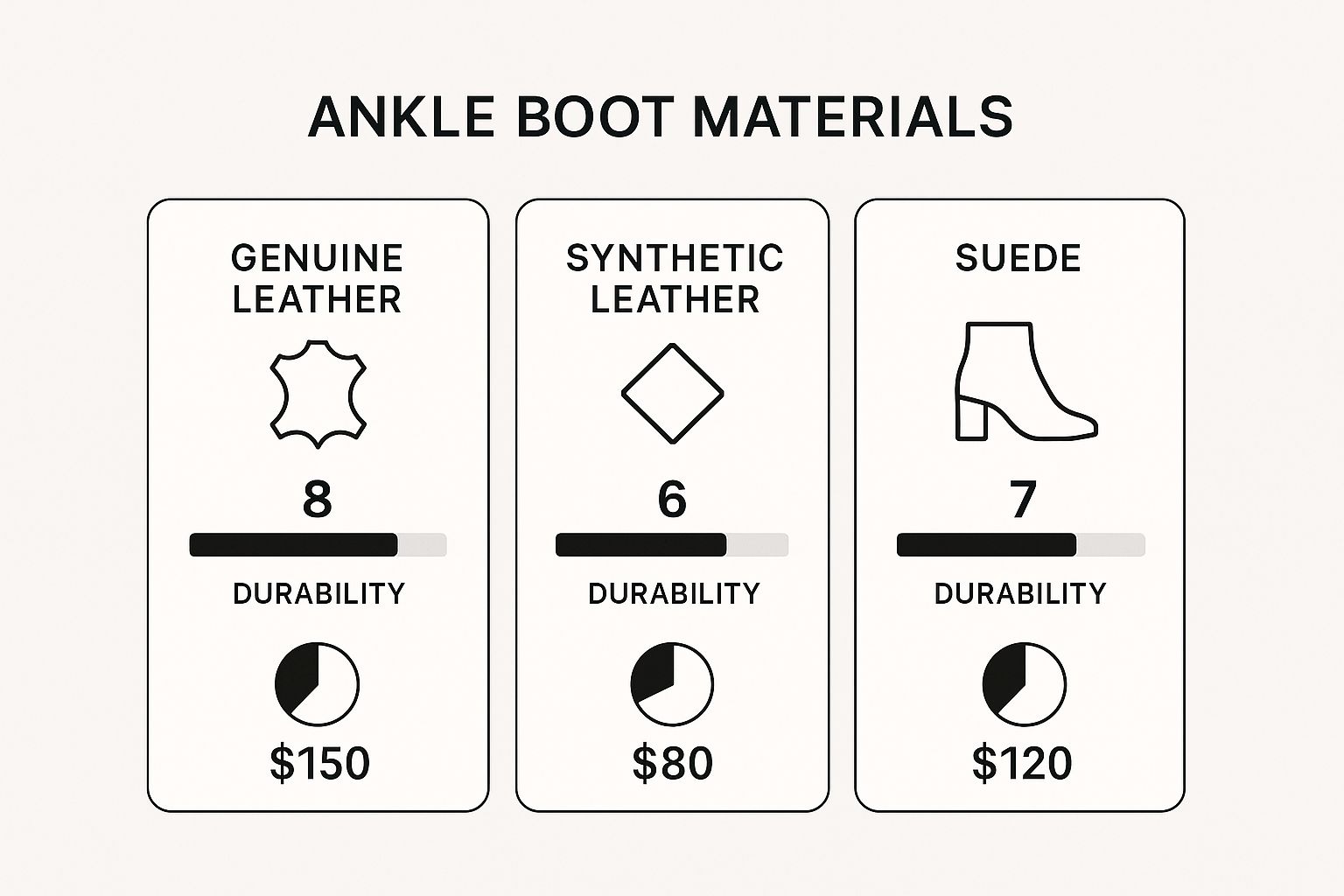
Understanding Boot Construction Methods
Just as important as the leather is how the boot is actually built. The construction method affects everything—sturdiness, water resistance, and, crucially, whether it can be repaired down the road. Two classic techniques are the gold standard for a reason.
The way a boot is made says a lot about a brand's dedication to quality. You can learn more about our own philosophy by checking out our guide on Alexander Noel's leather grades and quality assurance.
Goodyear Welting
This is the hallmark of truly high-end footwear. A Goodyear welt is a time-tested method known for making boots that are practically indestructible.
Here's the gist of it: a strip of leather (the "welt") is stitched to the upper, and then that welt is stitched to the sole. A layer of cork is sandwiched in between, which slowly molds to your foot for a custom-like fit.
Goodyear-welted boots feel a bit stiff at first, but they break in beautifully. Best of all, they can be resoled again and again, massively extending their lifespan.
Blake Stitching
Another popular method, Blake stitching, creates a sleeker, more flexible boot. With this technique, the upper is stitched directly to the outsole from the inside.
The result is a boot that's lighter and more comfortable right out of the box. While Blake-stitched boots can still be resoled, it's a more specialized job. The choice really boils down to what you value more: immediate flexibility or the absolute pinnacle of repairability.
How to Achieve the Perfect Fit

A great pair of lace up ankle boots can make an entire outfit, but all that style is worthless if the fit is off. While the lacing system gives you a lot of control, starting with the right size is absolutely crucial for comfort, support, and the life of the boot. You're aiming for a boot that feels like it was custom-made for you, and that whole process starts with getting to know your own feet.
Getting an accurate measurement at home is easier than you think and it’s the best way to avoid the guesswork of buying shoes online. For a step-by-step guide, check out our post on how to measure your shoe size at home.
Measuring Your Feet The Right Way
Before you even glance at a size chart, you need your numbers. It's a simple but vital step. Feet can change over time, and it's always best to measure them later in the day when they've naturally swollen a bit.
- Trace Your Foot: Put a piece of paper on a hard floor, stand on it, and carefully trace the outline of your foot. Keep the pen straight up and down for the most accurate line.
- Measure Length and Width: Now, grab a ruler. Measure from the very back of your heel to the tip of your longest toe for the length. Then, measure across the widest part of your foot, which is usually the ball.
- Repeat for Both Feet: Most people have one foot that's slightly bigger than the other, which is totally normal. Always go with the measurements from your larger foot when picking a size.
Once you have these numbers, you're ready to hit the size charts. But remember, a size 9 in one brand might not be the same as another, so always, always check the specific chart for the boots you're buying.
The Try-On Test: What to Look For
When the boots finally arrive, the try-on is the moment of truth. This is more than just quickly slipping them on; it’s a detailed check to make sure you've found the one.
The perfect fit for a lace up ankle boot should feel snug but never tight. Your foot should be held securely in place without any pinching or pressure points. This allows the leather to mold perfectly to your foot over time.
And here's a pro tip: always try on boots with the kind of socks you'll actually wear with them. A thick wool sock takes up a lot more space than a thin dress sock.
- Check the Length: You should have about a half-inch of space—roughly the width of your thumb—between your longest toe and the front of the boot. Your toes need room to wiggle.
- Assess the Width: The boot should feel snug across the ball of your foot, but it shouldn't be painfully tight. If your foot feels squished from the sides, you probably need a wider size.
- Test for Heel Slippage: A little bit of heel lift (about a quarter of an inch) is fine in new, stiff boots. But if your heel is popping out with every step you take, they're too big.
The Break-In Process: Embracing the Journey
High-quality leather boots aren't supposed to feel like old slippers right out of the box. There's a break-in period, which is just the leather softening and shaping itself to the unique curves of your feet. This is where a good fit becomes a truly personal one.
Start by wearing your new boots around the house for an hour or two at a time. This warms up the leather and lets it stretch without giving you blisters. Slowly wear them for longer periods until they feel ready for a full day out. It takes a little patience, but this process is what transforms a well-fitting boot into your boot—a custom fit that just gets better and better with every wear.
Styling Lace-Up Boots for Any Occasion
You've mastered the fundamentals—the anatomy, the best materials, and how to find that perfect fit. Now for the creative part: unleashing their power in your wardrobe. The real magic of lace-up boots is just how versatile they are. They're a true style workhorse.
Think of them as the anchor for your entire look. They can ground a casual weekend outfit, sharpen up for the office, or even add an edge to a dressier evening.
There's a reason they're everywhere. The ankle boot market, where lace-ups are a huge player, was worth about $915 million in 2024 and is expected to hit nearly $1.24 billion by 2032. That's because people want footwear that does it all—timeless style, real comfort, and everyday function. If you're interested in the numbers, you can discover more insights about ankle boot popularity on maximizemarketresearch.com.
Let's walk through how a single, well-chosen pair can play multiple roles in your closet. Styled right, your boots become an extension of your personal brand, ready for whatever the day brings.
Mastering the Casual Weekend Look
When the weekend hits, it's all about comfort and personality. This is the natural habitat for those rugged, heritage-inspired lace-up boots. They just work with classic, easygoing clothes.
Start with your boots as the foundation and build up from there. A great pair of well-worn denim is their best friend. How your jeans meet your boots is a small detail that makes a big difference.
- For a classic look: A simple single or double cuff that rests just above the boot shaft is clean and intentional.
- For an edgier vibe: A messier pinroll shows off more of the boot's shape and adds a modern twist.
Layering is your best friend here. Throw on a simple t-shirt or a henley, then add a flannel, a chunky sweater, or a casual field jacket. This creates texture and depth, making the outfit feel put-together, not just thrown-on. The boots anchor the whole thing with a sense of durable style.
The Smart Casual Office Ensemble
Taking lace-up boots to the office is all about choosing a more polished silhouette and pairing it with smarter pieces. A sleek leather boot can absolutely stand in for traditional dress shoes, adding a dash of modern character to your workwear.
Your boots should complement your outfit, not overpower it. Look for styles with a slimmer profile, a smooth leather finish, and a less aggressive sole. Darker colors like black, deep brown, or oxblood are always a safe and versatile bet.
For a sharp, office-ready outfit, try these pairings:
- With Chinos or Trousers: A clean, tapered leg is key. You want the hem of your pants to either just "kiss" the top of the boot or have a very slight break. Avoid baggy fabric bunching up around the ankle—it just looks sloppy.
- With Skirts or Dresses: A sleek lace-up ankle boot works surprisingly well with midi skirts and dresses. The boots add a little weight and structure to balance out softer fabrics, creating a look that’s both strong and feminine.
The right boot bridges that gap between formal and casual, showing you have confidence and an eye for detail. It's an effortless way to inject some personality into your work look while staying completely professional. This is where your investment in quality materials really shows, creating a look that's built to last and impeccably stylish.
Extending the Life of Your Boots
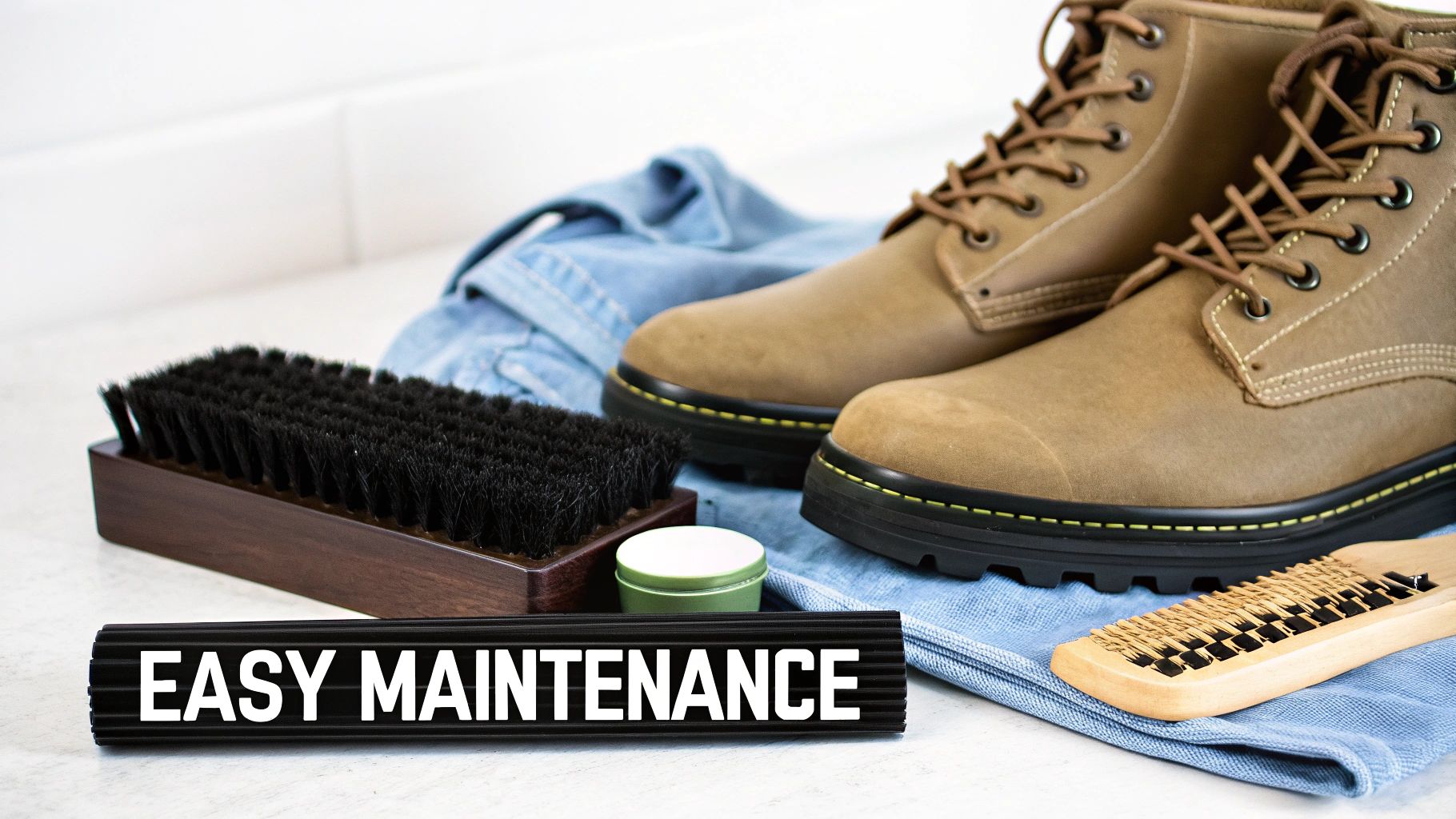
When you invest in a quality pair of lace up ankle boots, you're getting more than just footwear; you're getting a companion for your personal style journey. With just a little care, that companion can last you a lifetime.
This isn’t about some complex, time-consuming ritual. It’s about building a few simple habits that will protect the materials and honor the craftsmanship that went into your boots. You'd be surprised how far a little attention goes.
The Essentials of Cleaning and Conditioning
First things first: keep them clean. Dirt and grime aren't just messy; they actively break down the fibers in the leather over time. How you clean them, though, depends entirely on the material.
- For Leather Boots: Grab a soft brush and get rid of any loose dirt. Follow that up with a gentle leather cleaner on a damp cloth, working in small circles, then wipe off the excess. Simple.
- For Suede Boots: Suede needs a lighter touch. A dedicated suede brush is your best friend here. Gently brush in one direction to lift dirt and maintain that signature napped texture.
After you've cleaned your leather boots, it's time to condition. Think of leather as skin—it needs moisture to stay flexible and avoid cracking. A good leather conditioner puts those essential oils back into the hide. Just apply a small amount with a clean cloth, give it a moment to sink in, and buff it out to a nice, soft shine.
Preserving Shape and Structure
How you store your boots matters just as much as how you clean them. Simply kicking them off into a pile in the closet is a fast track to permanent creases and a misshapen silhouette. Two simple tools can make all the difference.
The first is a good set of shoe trees. Cedar ones are best because they do double duty: they help the boot keep its original shape as it dries and they absorb any lingering moisture and odor.
Think of a shoe tree as the skeleton for your boot. It provides the internal support needed to fight gravity and wear, ensuring the boot's structure remains sound and its silhouette stays sharp.
Second, rotate your footwear. It's tempting to wear your favorite pair every day, but giving your boots a day off between wears is crucial. This lets them air out and dry completely, which drastically extends their life and keeps the footbed from breaking down prematurely.
When to Call a Professional
Even with the best care, the soles of your boots will eventually show the signs of a life well-lived. When you see the tread wearing thin or the sole starting to separate, it’s time to find a good cobbler. A professional resole can breathe new life into a well-loved pair of lace up ankle boots, giving them a new foundation so you can keep walking in them for many more miles to come.
Got Questions About Your Lace-Up Ankle Boots?
Even after you've found the perfect pair, a few questions always pop up. Getting those little details right is what turns a good pair of boots into your go-to footwear. We've gathered some of the most common questions right here to help you get the most out of your new favorite boots.
Making Them Your Own
How do I properly break in new leather lace-up ankle boots?
Honestly, the biggest thing you need is a little patience. Start by wearing your new boots around the house for just an hour or two at a time. Make sure you wear the same kind of socks you plan to wear with them out and about. Your body heat will naturally warm up the leather, helping it soften and mold to the unique curves of your feet without giving you dreaded blisters.
Can lace-up ankle boots be worn in professional settings?
You bet. The trick is all in the style you choose. Look for a pair with a sleek, polished finish in classic black or a deep brown. A slimmer profile and a less chunky sole are your best friends here. When you match them with some tailored trousers or a sharp skirt, they add a confident, modern vibe to any business casual look.
Care and Protection
What is the best way to clean and protect suede boots?
Suede is fantastic, but it does need a gentle touch. Always start with a proper suede brush to lightly remove any loose, dry dirt. Before you even wear them for the first time, give them a good spray with a quality suede protector. Reapplying it every few months is a great habit to get into, as it'll help shield them from moisture and stains.
Think of it this way: proper care isn't just about cleaning up messes. It's about preservation. Conditioning leather is a lot like moisturizing your skin—it keeps the material flexible and stops it from drying out and cracking over time.
How often should I condition my leather boots?
This really comes down to how often you wear them and what kind of weather they're up against. For boots in your regular rotation, conditioning them every 2-3 months is a solid baseline. If you're often wearing them in rain or snow, you might want to do it a bit more frequently.
It's that combination of durability and a secure fit that has made the lace-up design a powerhouse in the work boot industry—a market that's projected to hit $17.7 billion by 2025. You can dig deeper into the importance of lace-up boot designs on coherentmarketinsights.com.
Here at Alexander Noel, we believe your footwear should be a true expression of who you are, built with incredible skill. Jump into our Design Lab and create your own bespoke lace-up ankle boots, handcrafted by our global artisans just for you.


